
Idaho Content Standards
English Language Arts/Literacy
January 3, 2022
IDAHO STATE DEPARTMENT OF EDUCATION
CONTENT AND CURRICULUM | ENGLISH LANGUAGE ARTS/LITERACY
650 W STATE STREET, 2ND FLOOR
BOISE, IDAHO 83702
208 332 6800 OFFICE / 711 TRS
WWW.SDE.IDAHO.GOV
Table of Contents
Introduction ................................................................................................................................................................ 1
Foundational Reading Skills ....................................................................................................................................1
Building Knowledge ................................................................................................................................................1
Comprehending Grade-Level Complex Texts .........................................................................................................2
Valuing Text Evidence .............................................................................................................................................2
Organization and Substance of Key Aspects of the Standards ...............................................................................2
Coding Scheme .......................................................................................................................................................5
Kindergarten ............................................................................................................................................................... 6
Foundational Reading Skills Strand ........................................................................................................................6
Reading Comprehension Strand .............................................................................................................................7
Vocabulary Development Strand ...........................................................................................................................7
Research Strand ......................................................................................................................................................8
Writing Strand ........................................................................................................................................................8
Oral and Digital Communications Strand ...............................................................................................................8
Grammar and Conventions Strand .........................................................................................................................9
Grade 1 ..................................................................................................................................................................... 10
Foundational Reading Skills Strand ..................................................................................................................... 10
Reading Comprehension Strand .......................................................................................................................... 10
Vocabulary Development Strand ........................................................................................................................ 11
Research Strand ................................................................................................................................................... 12
Writing Strand ..................................................................................................................................................... 12
Oral and Digital Communications Strand ............................................................................................................ 13
Grammar and Conventions Strand ...................................................................................................................... 13
Grade 2 ..................................................................................................................................................................... 15
Foundational Reading Skills Strand ..................................................................................................................... 15
Reading Comprehension Strand .......................................................................................................................... 15
Vocabulary Development Strand ........................................................................................................................ 16
Research Strand ................................................................................................................................................... 17
Writing Strand ..................................................................................................................................................... 17
Oral and Digital Communications Strand ............................................................................................................ 18
Grammar and Conventions Strand ...................................................................................................................... 18
Grade 3 ..................................................................................................................................................................... 20
Foundational Reading Skills Strand ..................................................................................................................... 20
Reading Comprehension Strand .......................................................................................................................... 20
Vocabulary Development Strand ........................................................................................................................ 21
Research Strand ................................................................................................................................................... 22
Writing Strand ..................................................................................................................................................... 22
Oral and Digital Communications Strand ............................................................................................................ 22
Grammar and Conventions Strand ...................................................................................................................... 23
Grade 4 ..................................................................................................................................................................... 25
Foundational Reading Skills Strand ..................................................................................................................... 25
Reading Comprehension Strand .......................................................................................................................... 25
Vocabulary Development Strand ........................................................................................................................ 26
Research Strand ................................................................................................................................................... 27
Writing Strand ..................................................................................................................................................... 27
Oral and Digital Communications Strand ............................................................................................................ 27
Grammar and Conventions Strand ...................................................................................................................... 28
Grade 5 ..................................................................................................................................................................... 29
Foundational Reading Skills Strand ..................................................................................................................... 29
Reading Comprehension Strand .......................................................................................................................... 29
Vocabulary Development Strand ........................................................................................................................ 30
Research Strand ................................................................................................................................................... 30
Writing Strand ..................................................................................................................................................... 31
Oral and Digital Communications Strand ............................................................................................................ 31
Grammar and Conventions Strand ...................................................................................................................... 32
Grade 6 ..................................................................................................................................................................... 33
Reading Comprehension Strand .......................................................................................................................... 33
Vocabulary Development Strand ........................................................................................................................ 34
Research Strand ................................................................................................................................................... 34
Writing Strand ..................................................................................................................................................... 35
Oral and Digital Communications Strand ............................................................................................................ 35
Grammar and Conventions Strand ...................................................................................................................... 36
Grade 7 ..................................................................................................................................................................... 38
Reading Comprehension Strand .......................................................................................................................... 38
Vocabulary Development Strand ........................................................................................................................ 39
Research Strand ................................................................................................................................................... 39
Writing Strand ..................................................................................................................................................... 40
Oral and Digital Communications Strand ............................................................................................................ 41
Grammar and Conventions Strand ...................................................................................................................... 41
Grade 8 ..................................................................................................................................................................... 43
Reading Comprehension Strand .......................................................................................................................... 43
Vocabulary Development Strand ........................................................................................................................ 44
Research Strand ................................................................................................................................................... 44
Writing Strand ..................................................................................................................................................... 45
Oral and Digital Communications Strand ............................................................................................................ 46
Grammar and Conventions Strand ...................................................................................................................... 46
Grades 9/10 .............................................................................................................................................................. 48
Reading Comprehension Strand .......................................................................................................................... 48
Vocabulary Development Strand ........................................................................................................................ 49
Research Strand ................................................................................................................................................... 50
Writing Strand ..................................................................................................................................................... 50
Oral and Digital Communications Strand ............................................................................................................ 51
Grammar and Conventions Strand ...................................................................................................................... 51
Grades 11/12 ............................................................................................................................................................ 53
Reading Comprehension Strand .......................................................................................................................... 53
Vocabulary Development Strand ........................................................................................................................ 54
Research Strand ................................................................................................................................................... 55
Writing Strand ..................................................................................................................................................... 55
Oral and Digital Communications Strand ............................................................................................................ 56
Grammar and Conventions Strand ...................................................................................................................... 56
References ................................................................................................................................................................ 57
1
Introduction
Idaho's education system should ensure that students are fully prepared for college and a career in the 21st
century upon graduation. Idaho’s education system should also ensure that students are prepared to be civically
engaged and knowledgeable adults who make positive contributions to their communities. Nothing could be
more vital for our state’s future.
To reach this goal, Idaho has revised its former English language arts standards. Throughout this year-long
process of reviewing, rethinking, and ultimately rewriting our standards, the Idaho Department of Education
engaged numerous stakeholders in a multi-layered process. In recent years Idaho teachers, schools, and districts
have worked together to improve English language arts education throughout the state. Revisions in this
document respond to the practical wisdom gleaned from their efforts and the interests of parents who have a
legitimate say in what their children learn.
Hi
gh-quality academic standards are the foundation of a well-functioning educational system—driving both the
instructional materials used in our schools and the assessments we ask students to take. With these new and
improved standards, Idaho builds on its past strengths and also learns from a body of experience with college
and career ready standards within Idaho and around the country. We have sought to make our standards the
best in the nation and lay the foundation for higher quality textbooks, more streamlined tests, and—
ultimately—generations of high school graduates fully capable of discharging the responsibilities associated with
United States citizenship.
Idaho’s Standards for English Language Arts are built on the following premises:
• Standards should be understandable to all stakeholders, free of jargon and "how to," with wording
focused on the learning goal.
• Standards should reflect the fact that English Language Arts is not merely a collection of discrete skills
and strategies but a powerful discipline with consequential content to teach and learn.
• Standards in the distinct strands should not serve as isolated areas of instruction; they are designed to
be joined purposely for deep and relevant learning.
I
daho’s Standards for English Language Arts prioritize the following content:
Foundational Reading Skills
Idaho’s standards emphasize explicit, systematic approaches to teaching phonemic awareness, phonics, and
fluency as the foundation of literacy in the early grades. Decoding and fluency are essential to creating proficient
readers. Findings in multiple studies reinforce the centrality of solid foundational reading skills to students’
reading comprehension and broader literacy abilities. The seminal National Reading Panel’s review two decades
ago is chief among the works testifying to the strength of the evidence for specific early reading practices. When
decoding words becomes rapid, automatic, and effortless, a reader’s working memory is freed to focus on the
meaning of the reading and growing knowledge. The most frequent performance breakdowns for students
struggling with reading generally stem from inadequate practice with foundational reading skills or scarce
opportunities to gain fluency with grade-level texts – both relatively straightforward to reinforce. Idaho’s
standards do this by requiring fluency practice through grade 12.
Building Knowledge
Idaho’s standards place a premium on students gathering, evaluating, and synthesizing information and data to
build their knowledge of the world. Research is emphatic that reading ability and knowledge about the world
2
(and the words used to describe it) are tightly connected. More than a quarter century of research supports the
importance of general knowledge to reading comprehension. Knowledge of the topic has been shown to have a
more significant impact on reading comprehension than students' generalized reading ability (Recht & Leslie,
1988). We cannot think deeply, productively, or critically about a matter if we have little foundational
knowledge of it. Thus, the key to developing critical thinking skills in our students is to increase their knowledge
about a breadth of subjects by reading rich and related texts on various topics. In addition to a research
standard, and in response to the substantial research base on the importance of knowledge to students’ ability
to read well and at high levels, there are two standards—one resides in the Reading Comprehension strand and
the other in the Research strand—dedicated to students reading a volume of texts on conceptually related
topics. Reading comprehension develops as students engage with resonant and rewarding literary and
nonfiction text selections where knowledge acquisition is the primary rationale for reading, starting at the
earliest grades to allow knowledge to build upon knowledge.
Comprehending Grade-Level Complex Texts
Idaho’s standards are specific about the complexity of texts students ought to be reading. Why do college- and
career-ready standards include definitions of text complexity? Students encountering appropriately complex
texts at each grade level develop the mature language skills and the conceptual knowledge they need for
success in school and life. Research shows that rather than the skills or strategies captured in the verbs used in
standards, the complexity of the text is the element that most differentiates performance on reading tests (ACT,
2006). Therefore, the standards include a definition of quantitative bands of complexity so that teachers and
students have clarity about what level of texts students should regularly read in class—that is, which literary and
nonfiction texts qualify as “grade-level.”
Valuing Text Evidence
Idaho’s standards accurately reflect the demand that students draw evidence from texts to support their claims
and conclusions—both orally and in writing—about the texts they are reading and what is happening in them.
Research shows that reading “thoughtfully and critically and produc[ing] evidence” is one of the most effective
ways to lead students to “make connections to related topics” and “synthesize information” (ICAS, 2002, p. 16).
Thus, for students to grow their knowledge from what they read and research, text evidence has a central and
recurring presence in the standards. Whatever they are reading, students must be able to show a steadily
growing ability to discern more from and make fuller use of text. Students must be able to make an increasing
number of connections among ideas and between texts; consider a wider range of textual evidence; and
become more sensitive to inconsistencies, ambiguities, and flawed reasoning in texts.
Organization and Substance of Key Aspects of the Standards
Idaho’s standards are organized into seven strands and written so that reading, writing, and oral
communications standards progress together. Students are expected to use the texts they read in their writing
and discussions. The strands are:
• Foundational Reading Skills
• Reading Comprehension
• Vocabulary Development
• Research
• Writing
• Oral and Digital Communications

3
• Grammar and Conventions
Standards under the Foundational Reading Skills Strand describe how students become competent readers who can
comprehend texts across a wide range of disciplines they will encounter in school and throughout their lives. Each
aspect of foundational skills names a slice of the skills and knowledge students need to acquire and are organized
under the sub-strands of Print Concepts, Phonemic Awareness, and Phonics and Decoding. Together they constitute
what the brain needs to learn and do in order to read proficiently. The standards aim to ensure every Idaho student
has an understanding and working knowledge of how spoken English is translated into print. Mastery of these
components will culminate in students becoming fluent readers. The standards constitute a research and evidence-
based scope and sequence for phonological awareness and phonics development, and a grounding in print and
alphabet awareness, that should guide the development or adoption of an effective reading curriculum.
Standards under the Reading Comprehension Strand emphasize the sophistication of what students read and
the skill with which they extract and wield evidence from texts. There are four overarching sub-strands—Text
Complexity, Volume of Reading to Build Knowledge, Textual Evidence, and Reading Fluency—that work together
with the grade-specific standards for Literature and Nonfiction Text (the other two sub-strands) to promote
reading comprehension. The standards for Text Complexity outline a grade-by-grade sequence on increasing
text complexity, from grade two to the college and career readiness level. The sub-strand of Volume of Reading
to Build Knowledge focuses on growing students' trove of knowledge of the world from reading (or being read to
from) volumes of texts at a range of complexity levels. The sub-strand for Textual Evidence conveys the belief
that students should show a growing ability to discern more from and make fuller use of the ideas and concepts
within texts. Whether done aloud or silently, fluent reading is another crucial component of students’ reading
comprehension and thus constitutes another sub-strand. Because texts increase in complexity across grades and
genre, being fluent in one grade does not guarantee fluency in succeeding grades. Thus, as noted above, fluency
practice is required through grade 12.
The standards in the Vocabulary Development Strand reflect the fact that researchers have closely tied
vocabulary to reading comprehension for nearly a century. As Marilyn Adams says, “Words are not just words.
They are the nexus—the interface—between communication and thought. When we read, it is through words
that we build, refine, and modify our knowledge. What makes vocabulary valuable and important is not the
words themselves so much as the understandings they afford” (2009, p. 180). Strong vocabularies allow students
to engage and participate in career, civic, and life pursuits more fully. To use language with precision requires, at
the most fundamental level, a command of words. The sub-strand of Word Building asks students not merely to
master the use of words in context but to familiarize themselves with how word meaning is constructed from
roots and affixes. From using resources to research the multiple meanings of words to exploring nuances and
shades of meaning, the standards guide students in developing their understanding and skill at deploying the
right word to fit the right instance. The other sub-strand, Academic Vocabulary, expects students to grow and
expand their vocabulary to incorporate both general academic and content-specific words so they can read with
increasing confidence and write and speak with greater force and clarity.
Under the Research Strand, students conduct simple research to build their knowledge of the world and
communicate their discoveries. The sub-strand of Inquiry Process to Build, Present, and Use Knowledge asks
students to generate questions on topics of importance or interest. They gather, evaluate, and synthesize
information and data from various sources and communicate that research to suit different audiences and
purposes. Within a grade level, the sub-strand of Deep Reading on Topics to Build Knowledge argues that there
should be an adequate number of titles on a given topic to allow students to study topics deeply for a sustained
period. The knowledge children learn in earlier grade levels should then be expanded and developed in
subsequent grade levels. That way, students grow their academic vocabulary and cultivate knowledge over time
and with growing maturity levels about the natural and social world. Children in the early grades (particularly K–
4
2) will benefit from participating in rich, structured conversations in response to texts teachers read aloud.
Together they can orally compare, contrast, and synthesize information in the manner called for by the
standards. Children in the upper elementary grades and beyond will generally be expected to read texts
independently and reflect on them in writing.
The standards under the Writing Strand and sub-strand of Range of Writing are designed to ensure students
develop the flexibility to write for multiple purposes and audiences. All students can learn how to marshal
textual evidence in the service of a skilled interpretation of what a text says directly or inferentially, and learning
to do so is essential to students’ futures. Researchers note that the task most associated with college-level work
across the disciplines is "reading-to-write" (Flower et al., 1990, p. 4). College instructors are unanimous in citing
the ability to identify, evaluate, and use evidence to support or challenge a thesis as one of the essential skills
expected of incoming college students (Graham & Hebert, 2010; ICAS, 2002). The types of writing described in
the standards are versatile and worth learning; mature writing often blends elements of more than one type.
For example, an argument may include a reflection, an exposition might consist of a critique, or a short story
may explain an idea. In addition, each type of writing is itself a broad category encompassing a balance of
genres. For example, narrative writing could include narrative poems, short stories, and memoirs. Since research
shows that writing about text(s) is one of the most powerful ways students can improve their reading
comprehension and knowledge, writing to sources is a priority. Across all types of writing, students need to be
able to reshape and polish pieces of writing and be facile with printing, cursive, and keyboarding, which
constitutes the other sub-strand (Handwriting and Keyboarding).
The standards under the Oral and Digital Communications Strand include two sub-strands: Oral Communications
and Digital Communications. The standards under those two sub-strands reflect the importance of verbal and
visual communications in today's society. They illustrate the priority given to working collaboratively in diverse
groups and organizational settings and the need to be able to decipher oral and digital communications for their
explicit and implicit messages. New technologies have broadened and expanded the role that speaking and
listening play in acquiring and sharing knowledge and have elevated the role of digital communications. To fully
participate in civic life in our technological society, students need the ability to gather, comprehend, and
evaluate information and ideas delivered through oral and digital media. The Oral and Digital Communications
standards lay out a progression of competencies in which students develop the ability to listen carefully and
express ideas; integrate information from oral, visual, quantitative, and digital sources; and critically evaluate
what they hear and see to become more informed, reflective, and engaged participants in society.
The standards under the Grammar and Conventions Strand not only identify a steady progression toward
student mastery of the rules and conventions of English grammar, but they also communicate that language is a
matter of craft and informed choice among alternatives. To convey meaning effectively and build a foundation
for writing with precision and clarity, students must learn about the mechanics of the English language and
standard expectations for usage. Understanding conventions and grammar is not unimportant for reading;
learning how to navigate poetry or prose on the page requires a grasp of how words are strung together and
assembled into meaningful sentences. The competent and skillful use of conventions even impacts speaking and
listening. They are the mark of an adept user of language. Students should also have a well-developed sense of
when discourse calls for standard conventions and when other, more informal modes of communication may be
more appropriate.

5
Coding Scheme
We express our sincere thanks to all educators and members of the public who contributed to this vital effort. In
particular, we thank the many individuals who served on the standards review committees to represent Idaho’s
teachers and students.
Foundational Reading Skills: FR
Print Concepts: PC
Phonemic Awareness: PA
Phonics and Decoding: PH
Writing Strand: W
Range of Writing: RW
Handwriting and Keyboarding: HWK
Reading Comprehension: RC
Text Complexity: TC
Volume of Reading to Build Knowledge: V
Textual Evidence: TE
Reading Fluency: RF
Literature: L
Nonfiction Text: NF
Oral and Digital Communications Strand: ODC
Oral Communications : OC
Digital Communications : DC
Vocabulary Development Strand: VD
Word Building: WB
Academic Vocabulary: AV
Grammar and Conventions Strand: GC
Grammar and Usage: GU
Mechanics: M
Research Strand: RS
Inquiry Process to Build, Present, and Use
Knowledge: IP
Deep Reading on Topics to Build Knowledge: DR

6
Kindergarten
Foundational Reading Skills Strand
K.FR-
Print Concepts (PC)
1.
Demonstrate understanding of the basic features of print.
1a.
Locate a printed word on a page.
1b
. Recognize that spoken words are represented in written language by specific sequences of letters.
1c.
Know that print (not pictures) is what we read, and text holds meaning.
1d.
Follow words from left to right with return sweep at the end of each line.
1e.
Read left to right, top to bottom, and page by page.
1f.
Understand that words are separated by spaces in print.
1g.
Recognize the distinguishing features of a sentence (e.g., first word, capitalization, ending punctuation).
1h.
Identify and name all upper- and lowercase letters of the alphabet.
Phonemic Awareness (PA)
2.
Demonstrate understanding of spoken words, syllables, and sounds.
2a.
Identify and produce rhyming words.
2b
. Count, pronounce, blend, delete, and segment syllables in spoken words.
2c.
Blend and segment onsets and rimes of single-syllable spoken words.
2d.
Isolate and pronounce the initial, medial vowel, and final sounds (phonemes) in spoken three-phoneme
(consonant-vowel-consonant, or CVC) words and say the resulting word (Note: This does not include CVCs
ending with /l/, /r/, or /x/.)
2e
. Add, substitute, and delete individual sounds (phonemes) in simple, one-syllable words to make new
words.
Phonics and Decoding (PH)
3.
Use knowledge of grade-level phonics and word analysis skills in decoding words.
3a
. Demonstrate knowledge of one-to-one letter-sound correspondences by producing the most frequent
sound for each consonant letter.
3b.
Associate the long and short sounds for the five major vowel letters.
3c.
Read common high-frequency words with automaticity by sight (e.g., the, of, to, you, she, my, is, are, do,
does).
3d.
Distinguish between similarly spelled CVC words by identifying the sounds of the letters that differ.

7
Reading Comprehension Strand
K.RC-
Text Complexity (TC)
1.
(Text Complexity begins in grade 2.)
Volume of Reading to Build Knowledge (V)
2.
Regularly engage in listening to a series of texts related to the topics and themes being studied to build
knowledge and vocabulary.
Textual Evidence (TE)
3.
Ask and answer questions about key details in texts heard.
Reading Fluency (RF)
4.
Read emergent-reader texts (e.g., rhymes, songs, simple poems) with purpose and understanding.
Literature (L)
5.
With support, use evidence from literature read aloud to demonstrate understanding of grade-level texts.
5a.
Retell key details of familiar stories, poems, and nursery rhymes heard.
5b.
Describe the connection between characters, settings, and major events in stories heard.
5c.
Identify the front cover, back cover, and title page of stories.
5d.
Define the roles of authors and illustrators in presenting the ideas or information in stories.
5e.
Compare and contrast the adventures or experiences of characters in familiar stories heard.
Nonfiction Text (NF)
6.
With support, use evidence from nonfiction works read aloud to demonstrate of grade-level texts.
6a.
Retell key details of texts heard.
6b.
Describe the connection between two individuals, events, ideas, or pieces of information in texts heard.
6c.
Identify the front cover, back cover, and title page of nonfiction texts.
6d.
Identify the reasons authors give to support points in texts heard.
6e.
Identify basic similarities in and differences between two texts heard on the same topic.
Vocabulary Development Strand
K.VD-
Word Building (WB)
1.
Determine or clarify the meaning of unknown and multiple-meaning words and phrases based on
kindergarten reading and content.
1a.
Ask and answer questions about unknown words in a text.

8
1b. Identify new meanings for familiar words and apply them accurately (e.g., discovering the verb “roll” is
also a noun).
2.
With support, explore word relationships and nuances in word meanings.
2a.
Sort common objects into categories (e.g., foods, size) to gain a sense of the concepts the categories
represent.
2b.
Demonstrate understanding of frequently occurring verbs and adjectives by relating them to their
synonyms and antonyms.
2c.
Distinguish shades of meaning among verbs describing the general action (e.g., walk, march, strut,
prance).
2d.
Identify real-life connections between words and their use (e.g., note places at home that are cozy).
Academic Vocabulary (AV)
3.
With support, use words and phrases acquired through conversations, reading, and listening to texts.
Research Strand
K.RS-
Inquiry Process to Build, Present, and Use Knowledge (IP)
1.
(Inquiry process begins in grade 1.)
Deep Reading on Topics to Build Knowledge (DR)
2.
Listen to a series of texts organized around a variety of conceptually related topics to build knowledge about
the world.
Writing Strand
K.W-
Range of Writing (RW)
1.
Routinely write or dictate writing for a range of tasks, purposes, and audiences.
Handwriting and Keyboarding (HWK)
2.
Print all uppercase and lowercase letters of the alphabet. Write left to right and top to bottom with
appropriate spaces between letters.
3.
(Keyboarding skills begin in grade 3.)
Oral and Digital Communications Strand
K.ODC-
Oral Communications (OC)
1.
Engage in collaborative discussions about grade-level topics and texts with peers by following agreed upon
rules for discussions; listening to others and taking turns speaking through at least two exchanges.
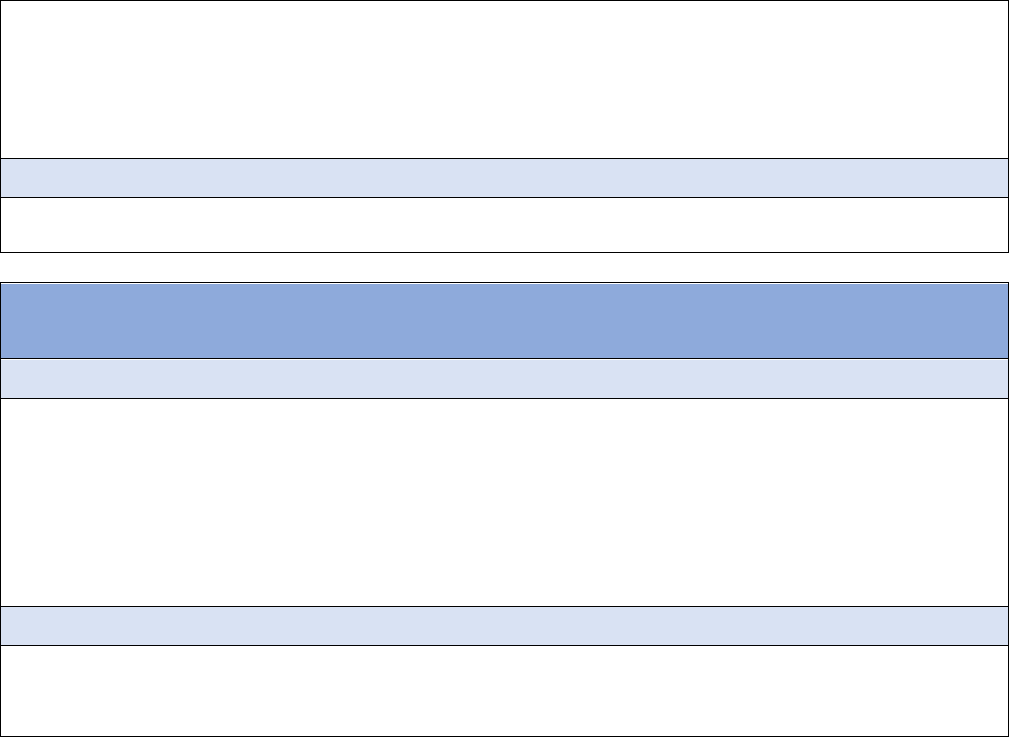
9
2. With support, confirm understanding of a text read aloud or information presented orally by asking and
answering questions.
3.
With support, ask and answer questions to seek help, get information, or clarify something that is not
understood.
4.
Describe familiar people, places, things, and events with support.
Digital Communications (DC)
5.
(Digital Communications begin in grade 3.)
Grammar and Conventions Strand
K.GC-
Grammar and Usage (GU)
1.
Demonstrate command of the conventions of English grammar and usage when writing or speaking.
1a.
Form regular plural nouns orally by adding ‘s’ or ‘es’ sound.
1b.
Use interrogatives to ask questions in full sentences (e.g., who, what, where, when, why, how).
1c.
Use frequently occurring prepositions (e.g., to, from, in, out, on, off, for, of, by, with).
1d.
Produce and expand complete sentences in shared language activities.
Mechanics (M)
2.
Recognize and name end punctuation.
3.
Spell words phonetically, drawing on knowledge of sound-letter relationships.

10
Grade 1
*Note: Print Concepts, standard 1, is found only in kindergarten. Reading Fluency standards run K–12 and are contained
within standard 4, Reading Comprehension.
Foundational Reading Skills Strand
1.FR-
Phonemic Awareness (PA)
2.
Demonstrate understanding of spoken words, syllables, and sounds.
2a.
Distinguish long from short vowel sounds in spoken single-syllable words.
2b
. Orally produce single-syllable words by blending sounds, including consonant blends.
2c
. Isolate and pronounce initial, medial vowel, and final sounds in spoken single-syllable words.
2d.
Delete initial and final sounds in spoken single syllable words and say the resulting word.
2e
. Segment and blend sequences of individual sounds in spoken single-syllable words.
Phonics and Decoding (PH)
3.
Use knowledge of grade-level phonics and word analysis skills in decoding words.
3a
. Know the spelling-sound correspondences for common consonant digraphs.
3b
. Decode regularly spelled one-syllable words.
3c.
Know final -e and common vowel team conventions for representing long vowel sounds (e.g., ai, ay, ee,
ea, oa, and oe).
3d.
Use knowledge that every syllable must have a vowel sound to determine the number of syllables in a
printed word.
3e.
Learn all the r-controlled vowel patterns (-ar, -er, -ir, -or, -ur) and recognize how they change short
vowel recognition and pronunciation.
3f.
Decode two-syllable words following basic patterns by breaking the words into syllables.
3g.
Decode frequently encountered words with inflectional endings (e.g., -s, ed, -est).
3h.
Recognize and read grade-appropriate irregularly spelled words (e.g., what, said, have).
Reading Comprehension Strand
1.RC-
Text Complexity (TC)
1
. (Text complexity begins in grade 2.)
Volume of Reading to Build Knowledge (V)
2.
Regularly engage in reading and listening to a series of texts related to the topics and themes being studied
to build knowledge and vocabulary.
Textual Evidence (TE)

11
3.
Ask and answer questions about key details in texts heard or read.
Reading Fluency (RF)
4.
Read grade-level text with accuracy, appropriate rate, and expression to support comprehension in
successive readings
(see the 2017 Hasbrouck and Tindal norms listed in the Resource Reference).
Literature (L)
5.
Use evidence from literature to demonstrate understanding of grade-level texts.
5a.
Retell the beginning, middle, and end of familiar stories (including fables and fairy tales) with key details
heard or read, demonstrating understanding of their central messages or morals.
5b.
Describe the connection between characters, settings, and major events in stories heard, using key
details.
5c.
Describe major differences between books that tell stories and books that give information.
5d.
Describe who is telling stories heard or read at various points in texts.
5e.
Compare and contrast the adventures or experiences of characters in stories heard.
Nonfiction Text (NF)
6.
Use evidence from nonfiction works to demonstrate understanding of grade-level texts.
6a.
Retell key details of texts that demonstrate understanding of the main topics of texts heard or read.
6b.
Describe the connection between two individuals, events, ideas, or pieces of information in texts heard
or read.
6c.
Know and use various text features (e.g., table of contents, headings, glossaries, icons, index) to locate
information in a text.
6d.
Identify the reasons authors give to support points in texts heard or read.
6e.
Identify basic similarities in and differences between two texts heard or read on the same topic.
Vocabulary Development Strand
1.VD-
Word Building (WB)
1.
Determine or clarify the meaning of unknown and multiple-meaning words and phrases based on grade-level
reading and content, choosing flexibly from an array of strategies:
1a.
Ask and answer questions to help determine or clarify the meaning of words and phrases in a text.
1b.
Use sentence-level context as a clue to the meaning of a word or phrase.
1c.
Use frequently occurring affixes (e.g., re-, un- pre-, -ful, -less) as clues to the nuance they add to known
words.
1d.
Recognize and read frequently encountered words with inflectional endings (e.g., -d, -ed, -s, -es).
1e.
Identify frequently encountered root words (e.g., help) and use the roots as clues to the meaning of the
full word (e.g., helper, helpful).

12
1f. Use knowledge of the meaning of individual words to predict the meaning of compound words (e.g.,
playpen, penpal).
2.
With support, explore word relationships and nuances in word meanings.
2a.
Sort words into categories (e.g., tools, pets) and define those words by one or more key attributes (e.g.,
a saw is a tool that cuts; a goldfish is a pet that lives in water).
2b.
Demonstrate understanding of frequently occurring grade-level verbs and adjectives by relating them to
their synonyms and antonyms.
2c.
Distinguish shades of meaning among verbs describing the same general action (e.g., walk, stroll, strut,
prance) by acting out the meanings.
2d.
Identify words and phrases in stories or poems that suggest feelings or appeal to the senses.
Academic Vocabulary (AV)
3.
With support as needed, acquire and use general academic and content-specific words gained through
conversations, reading, and listening to texts.
Research Strand
1.RS-
Inquiry Process to Build, Present, and Use Knowledge (IP)
1.
With support, conduct simple research tasks to take some action or make informal presentations by
identifying information from classroom experiences or provided sources (including read alouds) and organizing
information, recorded in words or pictures, using graphic organizers or other aids.
Deep Reading on Topics to Build Knowledge (DR)
2.
Read or listen to a series of texts organized around a variety of conceptually related topics to build
knowledge about the world.
Writing Strand
1.W-
Range of Writing (RW)
1.
Routinely write or dictate writing for a range of tasks, purposes, and audiences (e.g., expressing a view or
preference, supplying some information about the topic, stories that recount an event or tell a story).
Handwriting and Keyboarding (HWK)
2.
Print legibly and space words appropriately when writing a complete sentence.
3.
(Keyboarding skills begin in grade 3.)

13
Oral and Digital Communications Strand
1.ODC-
Oral Communications (OC)
1. Engage in collaborative Engage in collaborative discussions about grade-level topics and texts with peers by
listening to others closely, taking turns speaking through multiple exchanges, and asking questions to clear up
any confusion.
2.
Ask and answer questions about key details in a text read aloud or information presented orally or through
other media.
3.
Ask and answer questions about what a speaker says to gather additional information or clarify something
that is not understood.
4.
Describe people, places, things, and events with relevant details, expressing ideas and feelings clearly.
Digital Communications (DC)
5.
(Digital communications begins in grade 3.)
*Note: Students advancing through the grades are expected to meet each year’s grade-specific Grammar and Conventions
standards and retain or further develop skills and understandings mastered in preceding grades.
Grammar and Conventions Strand
1.GC-
Grammar and Usage (GU)
1.
Demonstrate command of the conventions English grammar and usage when writing and/or speaking.
1a.
Use subject-verb agreement in simple sentences.
1b.
Match single and plural nouns with matching verbs in simple sentences.
(e.g., He hops; We hop).
1c.
Form and use the simple verb tenses (past, present, and future) for regular verbs.
1d.
Use personal, possessive, and indefinite pronouns (e.g., I, me, my; they, them, their, anyone,
everything).
1e.
Use frequently occurring adjectives.
1f.
Use frequently occurring conjunctions to signal simple relationships (e.g., and, but, or, so, because).
1g.
Use frequently occurring prepositions (e.g., to, during, under, in, with, at).
1h.
Produce and expand complete sentences in response to prompts.
Mechanics (M)
2.
Demonstrate command of the conventions of English punctuation and capitalization when writing and
reading aloud to create meaning.
2a.
Distinguish among declarative, exclamatory, and interrogative sentences, and use periods, exclamation
marks, or question marks at the end of sentences when writing and reading text aloud.
2b.
Use commas in dates and to separate single words in a series.

14
2c. Capitalize the first word in a sentence, the first letter of student’s name, and the pronoun “I”.
3.
Use knowledge of spelling in writing.
3a.
Use conventional spelling for words with common, taught spelling patterns and frequently occurring
irregular words.
3b
. Spell untaught words phonetically, drawing on phonemic awareness and spelling conventions.
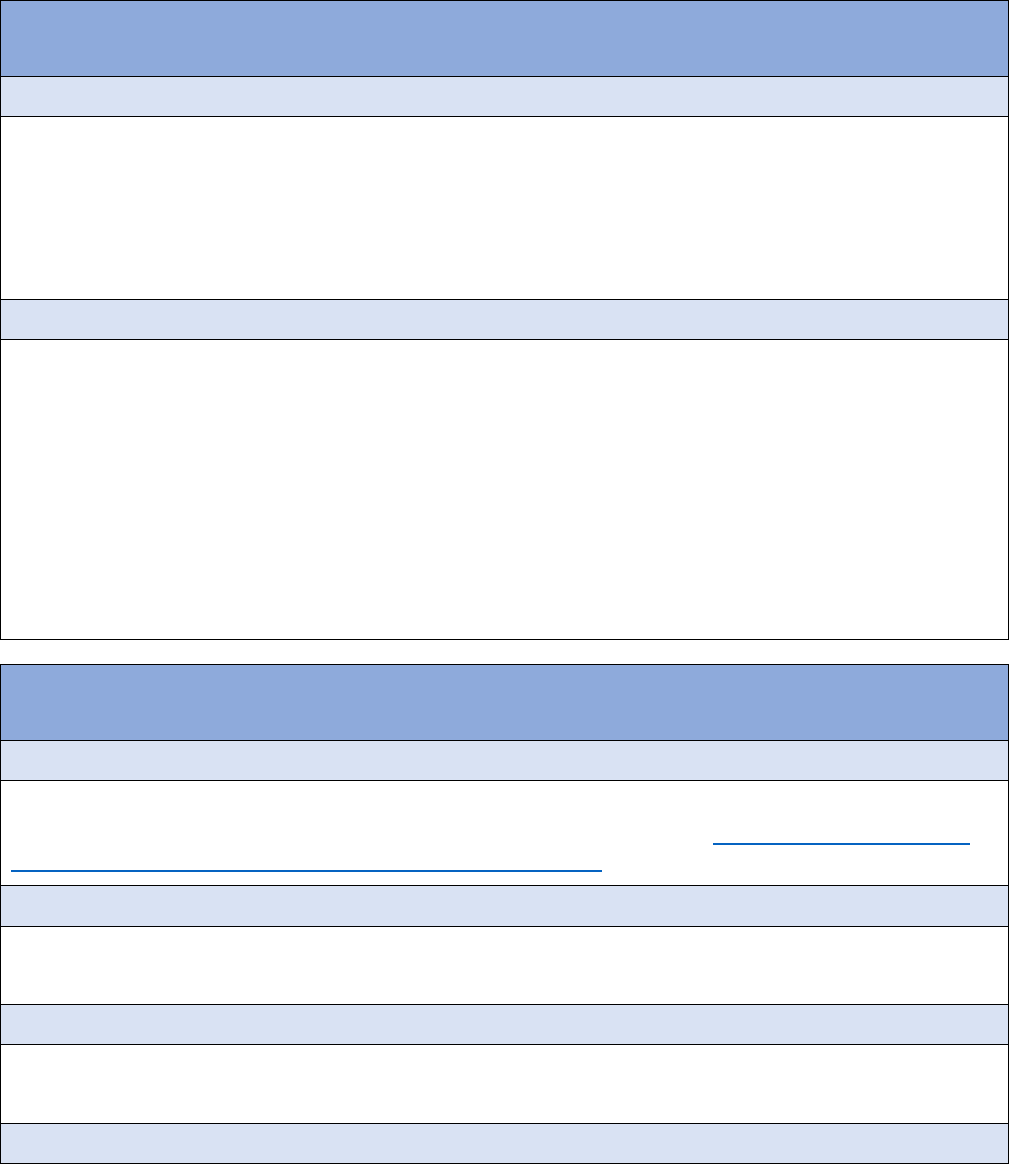
15
Grade 2
*Note: Print Concepts, standard 1, is found only in kindergarten. Reading Fluency standards run K–12 and are contained
within standard 4, Reading Comprehension.
Foundational Reading Skills Strand
2.FR-
Phonemic Awareness (PA)
2.
Demonstrate understanding of spoken words, syllables, and sounds.
2a.
Reverse phonemes in spoken one-syllable words (e.g., reverse initial and final consonants in the word
“pat” and say the resulting word).
2b
. Demonstrate automaticity in the deletion and substitution of phonemes in multi-syllable spoken words
and naming of resulting words.
Phonics and Decoding (PH)
3.
Use knowledge of grade-level phonics and word analysis skills in decoding words.
3a.
Know spelling-sound correspondences for common short and long vowel teams (e.g., head, hook, boat,
weigh) including diphthongs (e.g., toil, cloud).
3b.
Decode regularly spelled two-syllable words with long and short vowels.
3c.
Decode words with common prefixes and suffixes (e.g., un-, dis-, -ful, -less).
3d.
Identify words with inconsistent but common spelling-sound correspondences.
3e.
Recognize and read grade-appropriate irregularly spelled words (e.g., was, again, been), including silent
letter combinations.
Reading Comprehension Strand
2.RC-
Text Complexity (TC)
1.
Independently and proficiently read and comprehend texts representing a balance of genres, cultures, and
perspectives, that exhibit complexity at the lower end of the grades 2–3 band. (
See the Quantitative Analysis
Chart for Determining Text Complexity in the Resource Reference.)
Volume of Reading to Build Knowledge (V)
2.
Regularly engage in reading and listening to a series of texts, independently, with peers, or with modest
support related to the topics and themes being studied to build knowledge and vocabulary.
Textual Evidence (TE)
3.
Ask and answer such questions as who, what, where, when, why, and how to demonstrate understanding of
key details in grade-level texts heard or read.
Reading Fluency (RF)

16
4.
Read grade-level text with accuracy, appropriate rate, and expression to support comprehension in
successive readings (
see the 2017 Hasbrouck and Tindal norms listed in the Resource Reference).
Literature (L)
5.
Use evidence from literature to demonstrate understanding grade-level texts.
5a.
Identify the central message, lesson, or moral of stories (including fables and folktales) from diverse
cultures heard or read.
5b.
Describe how characters in stories heard or read respond to major events and challenges.
5c.
Describe the overall structure of stories heard or read, including identifying how the beginning
introduces the story and the ending concludes the action.
5d.
Identify different perspectives of characters in stories heard or read.
5e.
Compare and contrast two or more versions of the same story (heard or read) by different authors or
from different cultures.
Nonfiction Text (NF)
6.
Use evidence from nonfiction works to demonstrate understanding of grade-level texts.
6a.
Identify the central idea of texts heard or read.
6b.
Describe the connection between a series of historical events, scientific concepts, or steps in technical
procedures in texts.
6c.
Describe the overall structure of nonfiction texts heard or read, including identifying how the beginning
introduces information and the ending sums up the information.
6d.
Describe how authors use facts and reasons to support specific points in texts.
6e.
Compare and contrast the most important points presented in two texts on the same topic.
Vocabulary Development Strand
2.VD-
Word Building (WB)
1.
Determine or clarify the meaning of unknown and multiple-meaning words and phrases based on grade-level
reading and content, choosing flexibly from an array of strategies.
1a.
Use sentence-level context as clues to the meaning of words or phrases.
1b.
Determine the meaning of new words formed when known prefixes (e.g., safe/unsafe, like/dislike) and
suffixes (e.g., beauty/beautiful, light/lightness) are added to a known word.
1c.
Use a known root word as a clue to the meaning of an unknown word with the same root (e.g.,
pain/painful, help/helpless).
1d.
Use knowledge of the meaning of individual words to predict the meaning of compound words (e.g.,
backpack, backyard; flashlight, lighthouse).
1e.
Use glossaries and beginning dictionaries, print or digital, to clarify the meaning of words and phrases.
2.
Determine how words and phrases provide meaning and nuance to texts.

17
2a. Identify real-life connections between words and their use (e.g., describe weather that is freezing or
windy).
2b.
Distinguish shades of meaning among closely related verbs (e.g., toss, throw, hurl) and closely related
adjectives (e.g., hot, sizzling, blazing).
2c.
Describe how words and phrases (e.g., rhymes, alliteration) supply rhythm and meaning in a story,
poem, or song.
Academic Vocabulary (AV)
3.
Acquire and use general academic and content-specific words gained through conversations, and reading
and listening to texts, including using adjectives and adverbs to describe situations with specificity (e.g., When
other kids are acting silly, that makes me feel giddy). Use these words in discussions and writing.
Research Strand
2.RS-
Inquiry Process to Build, Present, and Use Knowledge (IP)
1.
With support as needed, conduct short research tasks to take some action or make informal presentations
by gathering information from experiences and provided sources (including read alouds), and organizing
information using graphic organizers or other aids.
Deep Reading on Topics to Build Knowledge (DR)
2.
Read or listen to a series of texts organized around a variety of conceptually related topics to build
knowledge about the world. (These texts should be at a range of complexity levels so students can read the
texts independently, with peers, or with modest support.)
Writing Strand
2.W-
Range of Writing (RW)
1.
Develop flexibility in writing by routinely engaging in the production of writing shorter and longer pieces for a
range of tasks, purposes, and audiences. This could include reflections, descriptions, letters, and poetry, etc.
2.
Write arguments that express an opinion supported by details and reasons and provide a concluding
sentence.
3.
Write informational texts that state a focus and support the focus with facts and details and provide a
concluding sentence.
4.
Write personal or fictional stories that recount a short sequence of events, include details to develop the
characters or experiences, and provide sense of closure.
5.
(Employing clear and coherent organizational structures begins in grade 3.)
6.
With support from adults and peers, strengthen writing as needed by revising and editing.
Handwriting and Keyboarding (HWK)

18
7.
Form letters correctly with functional speed. Space words and sentences properly so that writing can be read
easily by another person.
8.
With support, use keyboarding skills to produce and publish writing.
Oral and Digital Communications Strand
2.ODC-
Oral Communications (OC)
1.
Engage in collaborative discussions about grade-level topics and texts with peers by gaining the floor in
respectful ways, listening to others closely and building on others’ ideas, and asking for clarification and further
explanation to ensure understanding.
2.
Recount or describe key ideas or details from a text read aloud or information presented orally or through
other media.
3.
Ask and answer questions about what a speaker says to clarify by gathering additional information or deepen
understanding of a topic or issue.
4.
Tell a story or retell an experience with relevant facts and descriptive details, speaking audibly in coherent
sentences.
Digital Communications (DC)
5.
(Digital Communications begins in grade 3.)
*Note: Students advancing through the grades are expected to meet each year’s grade-specific Grammar and Conventions
standards and retain or further develop skills and understandings mastered in preceding grades.
Grammar and Conventions Strand
2.GC-
Grammar and Usage (GU)
1.
Demonstrate command of the conventions of English grammar and usage when writing or speaking.
1a.
Form and use the past tense of frequently occurring irregular verbs (e.g., felt, told, went).
1b.
Use adjectives and adverbs and choose between them depending on what is to be modified.
1c.
Form and use regular and frequently occurring irregular plural nouns (e.g., men, teeth, fish).
1d.
Recognize that the names of things can also be the names of actions (fish, dream, run).
1e.
Use reflexive pronouns (e.g., yourself, herself).
1f.
Distinguish between complete and incomplete sentences and recognize and use correct word order in
written sentences.
1g.
Produce and expand complete simple and compound sentences.
Mechanics (M)
2.
Demonstrate command of the conventions of English punctuation and capitalization when writing and
reading aloud to create meaning.

19
2a.
Commas in greetings and closing of letters.
2b.
Apostrophes to form contractions and frequently occurring possessives.
2c.
Capitalize holidays, names, and places.
3.
Use knowledge of spelling in writing.
3a.
Generalize learned spelling patterns when writing words (e.g., cage → badge; boy → boil).
3b. Consult reference materials, including beginning dictionaries, as needed to check and correct spellings.
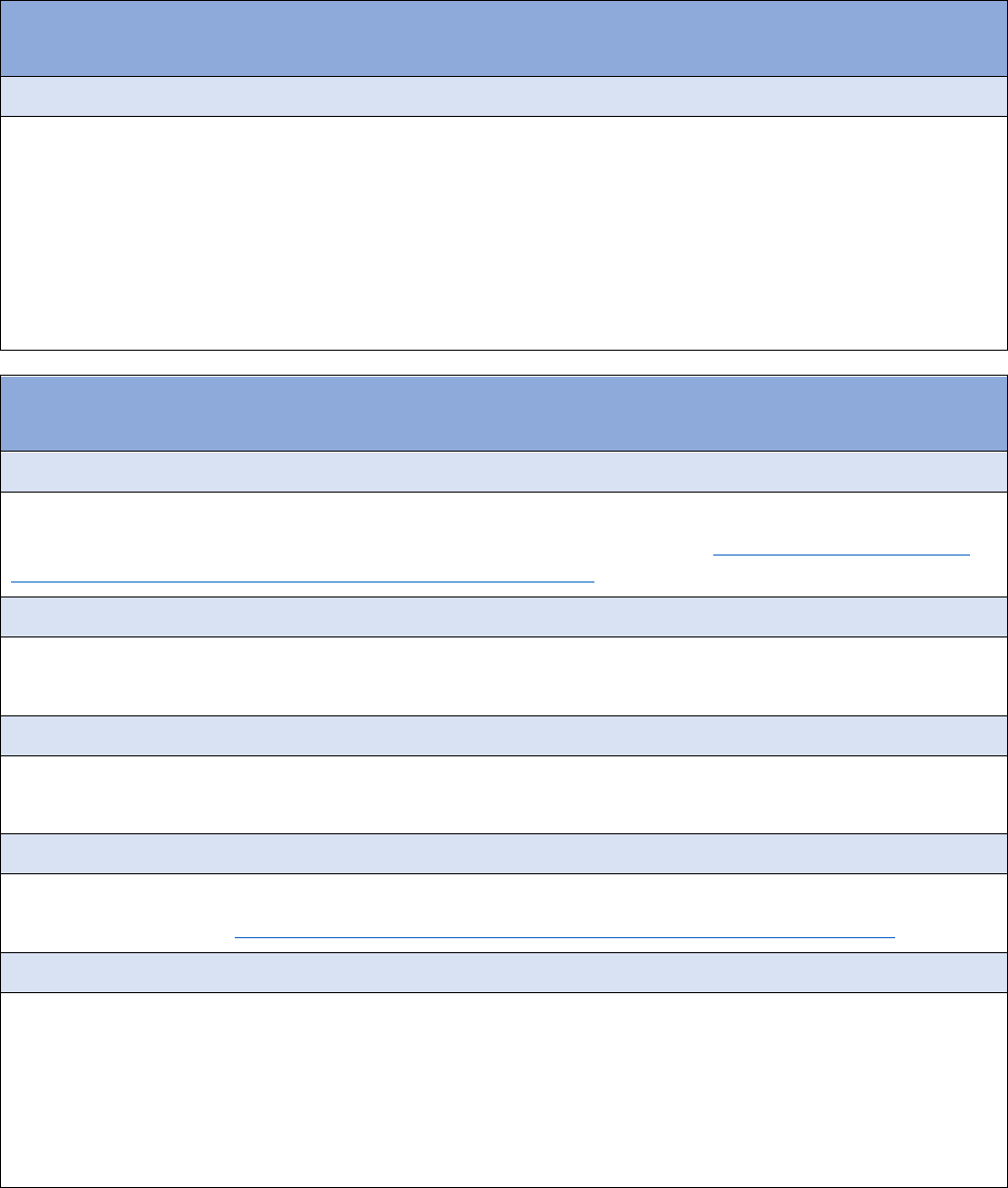
20
Grade 3
*Note: Print Concepts (standard 1) is found only in kindergarten; Phonemic Awareness (standard 2) is found only in
kindergarten, grade 1, and grade 2. Reading Fluency standards run K–12 and are contained within standard 4, Reading
Comprehension.
Foundational Reading Skills Strand
3.FR-
Phonics and Decoding (PH)
3.
Use knowledge of grade-level phonics and word analysis skills to decode words.
3a
. Decode words when known affixes are added to a known word (e.g., visit/revisit, appear/disappear,
lead/mislead, care/careful).
3b.
Decode words with common Greek and Latin roots (e.g., trans, port, bio).
3c.
Decode multisyllable words.
3d.
Read grade-appropriate irregularly spelled words (e.g., come, friend, today).
Reading Comprehension Strand
3.RC-
Text Complexity (TC)
1.
Independently and proficiently read and comprehend texts representing a balance of genres, cultures, and
perspectives that exhibit complexity at the higher end of the grades 2–3 band. (
See the Quantitative Analysis
Chart for Determining Text Complexity in the Resource Reference.)
Volume of Reading to Build Knowledge (V)
2.
Regularly engage in a volume of reading (independently, with peers, or with modest support) related to the
topics and themes being studied to build knowledge and vocabulary.
Textual Evidence (TE)
3.
Ask and answer questions to demonstrate understanding of grade-level texts, referring explicitly to textual
evidence as the basis for the answers.
Reading Fluency (RF)
4.
Read grade-level text with accuracy, automaticity, appropriate rate, and expression in successive readings to
support comprehension (
see the 2017 Hasbrouck and Tindal norms listed in the Resource Reference).
Literature (L)
5.
Use evidence from literature to demonstrate understanding of grade-level texts.
5a.
Describe key details from stories (including folktales, fables, and tall tales) from diverse cultures and
explain how they support the central lesson, moral, or theme.
5b.
Explain how characters develop (e.g., their traits, motivations, or feelings) throughout the text.
5c.
Explain major structural differences between poems, plays, and prose.

21
5d. Explain the difference between a narrator’s point of view and various characters’ perspectives in
stories.
5e.
Compare and contrast the themes, settings, and plots of stories written by the same author about the
same or similar characters.
Nonfiction Text (NF)
6.
Use evidence from nonfiction works to demonstrate understanding of grade-level texts.
6a.
Describe key details from texts and explain how they support the central idea.
6b.
Describe the relationship between a series of events, concepts, steps, or procedures in historical,
scientific, or technical texts, using words that pertains to comparison, sequence, or cause/effect.
6c.
Describe major structural differences between the organization of different informational texts (e.g.,
description, sequence, comparison, problem-solution, cause-effect).
6d.
Explain the logical connection between particular facts and reasons in texts.
6e.
Compare and contrast important points and key supporting details presented in two texts on the same
topic.
Vocabulary Development Strand
3.VD-
Word Building (WB)
1.
Determine or clarify the meaning of unknown and multiple-meaning word and phrases based on grade-level
reading and content, choosing flexibly from a range of strategies.
1a.
Use sentence-level context as clues to the meaning of words or phrases.
1b.
Determine the meaning of new words formed when known affixes are added to a known word (e.g.,
expensive/ inexpensive, lock/unlock, help/helpless, care/ careless).
1c.
Use a known root word as a clue to the meaning of an unknown word with the same root (e.g.,
transport, portable).
1d.
Use glossaries or beginning dictionaries, print or digital, to clarify the precise meaning of key words and
phrases.
2.
Determine how words and phrases provide meaning and nuance to grade-level texts.
2a.
Distinguish the literal and nonliteral meanings of words and phrases in context (e.g., take steps).
2b.
Distinguish shades of meaning among grade-appropriate, related words that describe states of mind or
degrees of certainty (e.g., knew, believed, suspected, heard, wondered).
Academic Vocabulary (AV)
3.
Acquire and use general academic and content-specific words and phrases occurring in grade-level reading
and content, including those that signal spatial and temporal relationships (e.g., She stood behind the door
before she entered the room). Use these words in discussions and writing.

22
Research Strand
3.RS-
Inquiry Process to Build, Present, and Use Knowledge (IP)
1.
Conduct short research tasks to take some action or share findings orally or in writing by gathering and
recording information on a specific topic from reference texts or through interviews, and using text features
and search tools (e.g., key words, sidebars, hyperlinks) to locate information efficiently.
Deep Reading on Topics to Build Knowledge (DR)
2.
Read a series of texts organized around a variety of conceptually related topics to build knowledge about the
world. (These texts should be at a range of complexity levels so students can read the texts independently, with
peers, or with modest support.)
Writing Strand
3.W-
Range of Writing (RW)
1.
Develop flexibility in writing by routinely engaging in the production of shorter and longer pieces for a range
of tasks, purposes, and audiences. This could include, among others, summaries, reflections, descriptions,
letters, and poetry, etc.
2.
Write arguments that introduce the topic, express an opinion supported with facts, details, and reasons, and
provide a concluding statement.
3.
Write informational texts that introduce the topic, develop the focus with facts and details, and provide a
concluding statement.
4.
Write personal or fictional stories that recount an event or experience, include details to develop the
characters or event(s), and provide a sense of closure.
5.
Group related information within a paragraph, using common linking words and phrases to connect ideas
and information.
6.
With support from adults and peers, develop and strengthen writing as needed by planning, revising, and
editing. (Editing should demonstrate command of grade-level Grammar and Conventions.)
Handwriting and Keyboarding (HWK)
7.
Write legibly in cursive, leaving space between letters in a word, in a sentence, and at the edges of the
paper.
8.
Use keyboarding skills to produce and publish writing.
Oral and Digital Communications Strand
3.ODC-
Oral Communications (OC)

23
1.
Engage in collaborative discussions about grade-level topics and texts with peers by staying on topic; linking
comments to the remarks of others; asking questions to check understanding of information being discussed;
and reviewing ideas expressed.
2.
Determine the main ideas and supporting details of a text read aloud or information presented in a variety of
media (audio, visual, and quantitative).
3.
Ask and answer questions about information from a speaker, offering appropriate elaboration and detail.
4.
Report orally on a topic or text, tell a story, or recount an experience with appropriate facts and relevant,
descriptive details, speaking clearly at an understandable pace.
Digital Communications (DC)
5.
With support, evaluate whether a digital source is factual or not by considering its use of evidence.
6
. Use information gained digitally to determine where, when, why, and how key events occur.
*Note: Students advancing through the grades are expected to meet each year’s grade-specific Grammar and Conventions
standards and retain or further develop skills and understandings mastered in preceding grades.
Grammar and Conventions Strand
3.GC-
Grammar and Usage (GU)
1.
Demonstrate command of the conventions of English grammar and usage when writing or speaking.
1a.
Form and use the progressive and perfect verb tenses.
1b.
Form and use comparative and superlative adjectives and adverbs.
1c.
Use collective nouns (e.g., family, crew, assembly) matched to plural verb forms.
1d.
Form and use regular and irregular plural nouns (e.g., fish, teeth).
1e.
Use common, proper, and possessive nouns.
1f.
Use coordinating and subordinating conjunctions.
1g.
Produce, expand, and rearrange simple and compound sentences.
1h.
Speak in complete sentences when appropriate to task and situation to provide requested detail or
clarification.
Mechanics (M)
2.
Demonstrate command of the conventions of English punctuation and capitalization when writing and
reading aloud to create meaning.
2a.
Commas in addresses and dates.
2b.
Commas and quotation marks in dialogue.
2c.
Forming and using possessives.
2d.
Capitalize appropriate words in titles.
3.
Use knowledge of spelling in writing.

24
3a. Use conventional spelling for high-frequency and other studied words and for adding suffixes to base
words.
3b.
Use spelling patterns and generalizations (e.g., word families, position-based spellings, syllable
patterns, ending rules, meaningful word parts) when pronouncing and writing words.
3c.
Spell high-frequency irregular words correctly (e.g., who, what, why).
3d.
Consult reference materials to check and correct spelling.

25
Grade 4
*Note: Print Concepts (standard 1) is found only in kindergarten; Phonemic Awareness (standard 2) is found only in
kindergarten, grade 1, and grade 2. Reading Fluency standards run K–12 and are contained within standard 4, Reading
Comprehension.
Foundational Reading Skills Strand
4.FR-
Phonics and Decoding (PH)
3.
Use combined knowledge of all letter-sound correspondences, syllabication patterns, and morphology (roots
and affixes) to read accurately unfamiliar grade-appropriate multisyllabic words (e.g., depart, beneficial,
recycle) in context and out of context.
Reading Comprehension Strand
4.RC-
Text Complexity (TC)
1.
Independently and proficiently read and comprehend texts representing a balance of genres, cultures, and
perspectives that exhibit complexity at the lower end of the grades 4–5 band.
(See the Quantitative Analysis
Chart for Determining Text Complexity in the Resource Reference.)
Volume of Reading to Build Knowledge (V)
2.
Regularly engage in a volume of reading, independently, with peers, or with modest support related to the
topics and themes being studied to build knowledge and vocabulary.
Textual Evidence (TE)
3.
Refer to details and examples in grade-level texts when explaining what texts say explicitly and when drawing
inferences from texts.
Reading Fluency (RF)
4.
Read grade-level text with accuracy, automaticity, appropriate rate, and expression in successive readings to
support comprehension (
see the 2017 Hasbrouck and Tindal norms listed in Resource Reference).
Literature (L)
5.
Use evidence from literature to demonstrate understanding of grade-level texts.
5a.
Determine the central themes in stories (including myths and legends), poems, and plays and explain
how they are supported by key details.
5b.
Describe a character, setting, or event in depth in stories and plays, drawing on specific details in the
texts (e.g., a character’s thoughts, words, or actions).
5c.
Explain the overall structures of stories, plays, and poems and how each successive part builds on
earlier sections.
5d.
Compare and contrast the point of view from which different stories are narrated, including the
difference between first- and third-person narrations.

26
5e. Compare and contrast the treatment of similar themes and patterns of events in stories, myths, and
traditional literature from different cultures.
Nonfiction Text (NF)
6.
Use evidence from nonfiction works to demonstrate understanding of grade-level texts.
6a.
Determine the central ideas of texts and explain how they are supported by key details; summarize
texts.
6b.
Explain events, procedures, steps, ideas, or concepts found in historical, scientific, or technical texts,
including what happened and why.
6c.
Explain the overall structure of informational texts (e.g., description, sequence, comparison, problem-
solution, cause-effect) and how each successive part builds on earlier sections.
6d.
Explain how authors use evidence and reasons to support specific points in texts.
6e.
Combine information from two texts on the same topic, noting important similarities and differences in
focus and the information provided.
Vocabulary Development Strand
4.VD-
Word Building (WB)
1.
Determine or clarify the meaning of unknown and multiple-meaning words and phrases based on grade-level
content, choosing flexibly from a range of strategies:
1a.
Use context (e.g., definitions, examples, or restatements in text) as clues to the meaning of words or
phrases.
1b.
Use common Greek and Latin affixes and roots as clues to the meaning of words (e.g., thermometer,
thermos, thermostat).
1c.
Consult reference materials (e.g., dictionaries, glossaries, thesauruses), print or digital, to find the
pronunciation and clarify the precise meaning of key words and phrases.
2.
Determine how words and phrases provide meaning and nuance to grade-level texts:
2a.
Recognize and explain the meaning of idioms, adages, and proverbs in context.
2b.
Distinguish shades of meaning among related words that describe subtle differences (e.g., shook,
trembled, wavered, quivered).
Academic Vocabulary (AV)
3.
Acquire and use accurately general academic and content-specific words and phrases occurring in grade-
level reading and content, including those that signal precise actions or states of being (e.g., frustrated, puzzled,
stammered) and vocabulary essential to a particular topic (e.g., heroes, villains, quest, fate when discussing
myths). Use these words in discussions and writing.

27
Research Strand
4.RS-
Inquiry Process to Build, Present, and Use Knowledge (IP)
1.
Conduct short research tasks to take some action or share findings orally or in writing by identifying what
information is needed to answer a research question, using text features and search tools to gather relevant
information efficiently; and taking notes, categorizing that information, and providing a list of sources.
Deep Reading on Topics to Build Knowledge (DR)
2.
Read a series of texts organized around a variety of conceptually related topics to build knowledge about the
world. (These texts should be at a range of complexity levels so students can read the texts independently, with
peers, or with modest support.)
Writing Strand
4.W-
Range of Writing (RW)
1.
Develop flexibility in writing by routinely engaging in the production of shorter and longer pieces for a range
of tasks, purposes, and audiences. This could include, among others, summaries, reflections, descriptions,
letters, and poetry, etc.
2.
Write arguments that introduce the topic; express a clear opinion supported with facts, details and reasons;
and provide a concluding statement or section.
3.
Write informational texts that introduce the topic; develop the focus with facts, details or other information;
and provide a concluding statement or section.
4.
Write personal or fictional narratives that organize the writing around a central problem, conflict, or
experience; use descriptions or dialogue to develop the characters or event(s); and provide a sense of closure.
5.
Organize related information together in paragraphs using precise language and linking words and phrases to
connect details and ideas.
6.
With support from adults and peers, develop and strengthen writing as needed by planning, revising, and
editing. (Editing should demonstrate command of grade-level Grammar and Conventions.)
Handwriting and Keyboarding (HWK)
7.
Write legibly and fluently in cursive by hand, forming letters and words that can be easily read by others.
8.
Use technology to produce and publish writing, demonstrating sufficient command of keyboarding skills.
Oral and Digital Communications Strand
4.ODC-
Oral Communications (OC)
1.
Engage in collaborative discussions about grade-level topics and texts with peers by carrying out assigned
roles; making comments that build on and link to others’ remarks; clarifying or following up on information;
and reviewing key ideas expressed and explaining one’s understanding.

28
2.
Paraphrase portions of a text read aloud, or information presented in diverse media (audio, visual, and
quantitative).
3.
Identify the reasons and evidence a speaker provides to support particular points being made.
4.
Report orally on a topic or text, tell a story, or recount an experience in an organized manner, using
appropriate facts and relevant, descriptive details to support main ideas or themes, speaking clearly at an
understandable pace.
Digital Communications (DC)
5.
Evaluate whether a digital source is factual or opinion-based by considering its use of evidence and whose
point-of-view is represented or missing.
6.
Interpret information presented visually, orally, or quantitatively (e.g., in charts, graphs, diagrams, timelines,
or interactive elements) on Web pages.
*Note: Students advancing through the grades are expected to meet each year’s grade-specific Grammar and Conventions
standards and retain or further develop skills and understandings mastered in preceding grades.
Grammar and Conventions Strand
4.GC-
Grammar and Usage (GU)
1.
Demonstrate command of the conventions of English grammar and usage when writing or speaking.
1a.
Recognize subject-predicate relationship in sentences.
1b.
Use principal modals to convey various conditions (e.g., can, may, must).
1c.
Order adjectives within sentences according to conventional patterns.
1d.
Use relative pronouns and relative adverbs.
1e.
Form and use prepositional phrases.
1f.
Correctly use frequently confused common words (e.g., to/too/two).
1g.
Ensure subject-verb agreement.
1h.
Produce complete sentences; recognize and correct inappropriate fragments and run-ons.
1i.
Differentiate between contexts that call for formal English (e.g., presenting ideas) and situations where
informal discourse is appropriate (e.g., small-group discussion); use formal English when appropriate to
task and situation.
Mechanics (M)
2.
Demonstrate command of the conventions of English punctuation and capitalization when writing and
reading aloud to create meaning.
2a.
Commas in a series.
2b.
Quotation marks to mark direct speech and quotations from a text.
2c.
Use correct capitalization.
3.
Spell grade level words correctly, including commonly confused words (e.g., there/their/they’re).
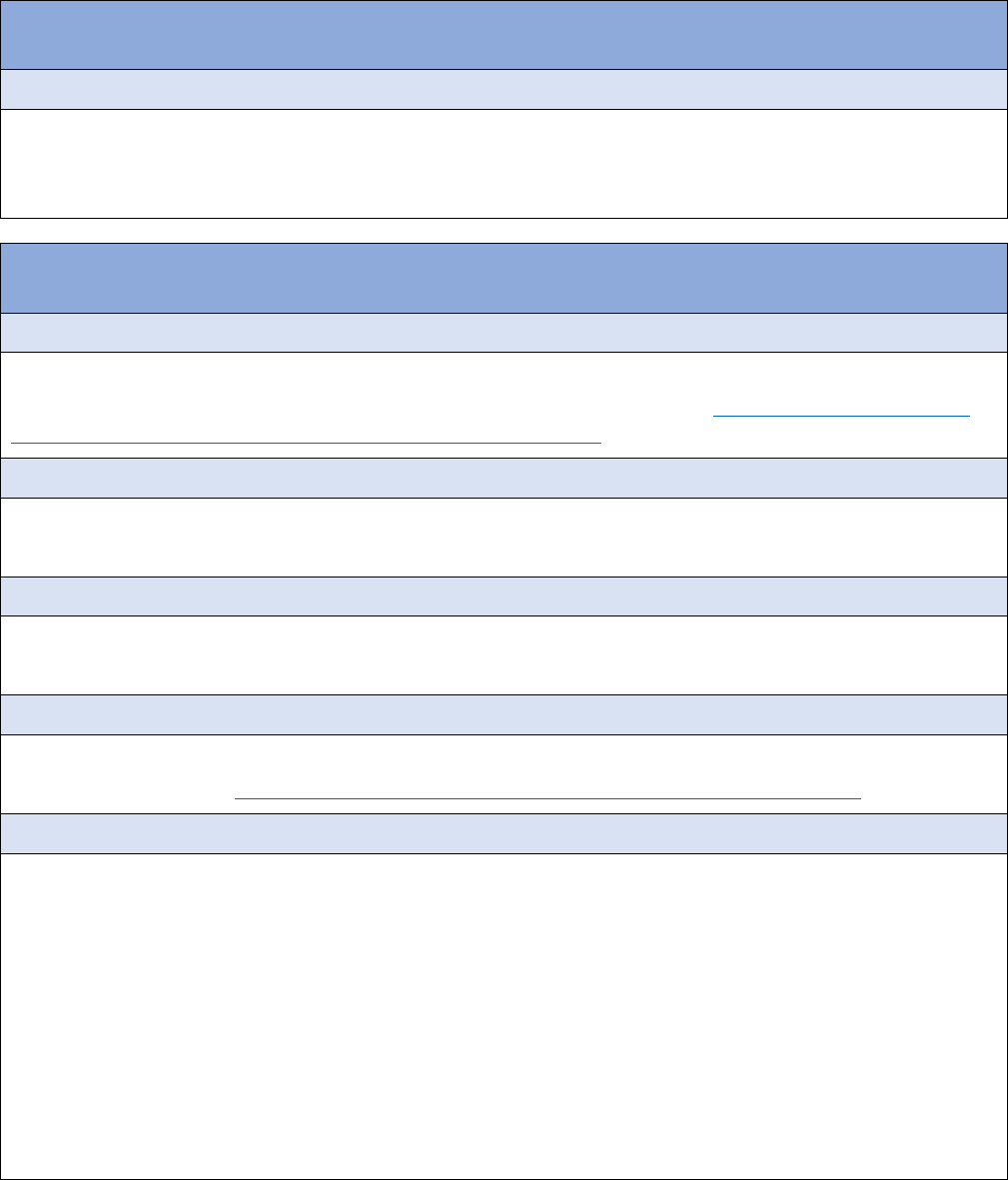
29
Grade 5
*Note: Print Concepts (standard 1) is found only in kindergarten; Phonemic Awareness (standard 2) is found only in
kindergarten, grade 1, and grade 2. Reading Fluency standards run K–12 and are contained within standard 4, Reading
Comprehension.
Foundational Reading Skills Strand
5.FR-
Phonics and Decoding (PH)
3.
Use combined knowledge of all letter-sound correspondences, syllabication patterns, and morphology (roots
and affixes) to read accurately unfamiliar grade-level multisyllabic words (e.g., disallow, misinform, transaction)
in context and out of context.
Reading Comprehension Strand
5.RC-
Text Complexity (TC)
1.
Independently and proficiently read and comprehend texts representing a balance of genres, cultures, and
perspectives that exhibit complexity at the higher end of the grades 4–5 band. (
See the Quantitative Analysis
Chart for Determining Text Complexity in the Resource Reference.)
Volume of Reading to Build Knowledge (V)
2.
Regularly engage in a volume of reading, independently, with peers, or with modest support related to the
topics and themes being studied to build knowledge and vocabulary.
Textual Evidence (TE)
3.
Draw evidence from grade-level texts to explain what is said explicitly and when drawing inferences,
including quoting from texts accurately.
Reading Fluency (RF)
4.
Read grade-level text with accuracy, automaticity, appropriate rate, and expression in successive readings to
support comprehension (
see the 2017 Hasbrouck and Tindal norms listed in Resource Reference).
Literature (L)
5.
Use evidence from literature to demonstrate understanding of grade-level texts.
5a.
Summarize a text and determine the central themes of stories, plays, or poems, including how they are
developed using details.
5b.
Compare and contrast two or more characters, settings, or events in stories and plays, drawing on
specific details in the texts.
5c.
Explain how chapters, scenes, or stanzas work together to provide the overall structure of a literary text.
5d.
Explain how a narrator’s or speaker’s point of view influence how events are described in stories, plays,
or poems.
5e.
Compare and contrast stories in the same genre on their approaches to similar themes.

30
Nonfiction Text (NF)
6.
Use evidence from nonfiction works to demonstrate understanding of grade-level texts.
6a.
Explain the central ideas of texts, including how they are developed using details; summarize texts.
6b.
Explain the relationships or interactions between two or more individuals, events, ideas, or concepts in
historical, scientific, or technical texts.
6c.
Explain how series of chapters or sections fit together to provide the overall structure of informational
texts (e.g., description, sequence, comparison, problem-solution, cause-effect).
6d.
Explain how authors use evidence and reasons to support specific claims in texts, identifying which
reasons and evidence support which claims.
6e.
Integrate information from several texts on the same event or topic to demonstrate a coherent
understanding of the information.
Vocabulary Development Strand
5.VD-
Word Building (WB)
1.
Determine or clarify the meaning of unknown and multiple-meaning words and phrases based on grade-level
content, choosing flexibly from a range of strategies.
1a.
Use context (e.g., definitions, examples, or restatements in text) as clues to the meaning of words or
phrase.
1b.
Use common Greek and Latin affixes and roots as clues to the meaning of words (e.g., biography,
biology, biohazard).
1c.
Consult reference materials (e.g., dictionaries, glossaries, thesauruses), print or digital, to find the
pronunciation and clarify the precise meaning of key words and phrases.
2.
Determine how words and phrases provide meaning and nuance to grade-level texts.
2a.
Recognize and explain the meaning of figurative language such as metaphors and similes, in context.
2b.
Distinguish shades of meaning among related words that describe different states or subtleties (e.g.,
sang, trilled, chirped, chorused).
Academic Vocabulary (AV)
3.
Acquire and use accurately general academic and content-specific words and phrases occurring in grade-
level reading and content, including those that signal contrast, addition, connection, and other logical
relationships (e.g., therefore, for example, meanwhile, on the other hand). Use these words in discussions and
writing.
Research Strand
5.RS-
Inquiry Process to Build, Present, and Use Knowledge (IP)

31
1.
Conduct short research tasks to take some action or share findings orally or in writing by formulating
research questions; gathering relevant and reliable information from both primary and secondary sources as
appropriate; paraphrasing and quoting ideas and information; and respecting copyright guidelines for use of
that information and any images.
Deep Reading on Topics to Build Knowledge (DR)
2. Read a series of texts organized around a variety of conceptually related topics to build knowledge about the
world. (These texts should be at a range of complexity levels so students can read the texts independently, with
peers, or with modest support.)
Writing Strand
5.W-
Range of Writing (RW)
1.
Develop flexibility in writing by routinely engaging in the production of shorter and longer pieces for a range
of tasks, purposes, and audiences. This could include, among others, summaries, reflections, descriptions,
critiques, letters, and poetry, etc.
2.
Write arguments that introduce the topic clearly; express a distinct opinion supported with adequate facts,
ideas, and reasons that are logically grouped and provide a concluding section.
3.
Write informational texts that introduce the topic; develop the focus with relevant facts, details, and
examples from multiple sources that are logically grouped, including headings to support the purpose; and
provide a concluding section.
4.
Write personal or fictional narratives that establish a situation and narrator; organize around a central
problem, conflict, or experience using descriptions, dialogue or pacing to develop the characters, event(s), or
experience(s); and provide a conclusion that follows from the narrated events.
5.
Produce clear and coherent organizational structures of multiple paragraphs in which facts and details are
logically grouped and linking words and phrases connect details and ideas.
6.
With support from adults and peers, develop and strengthen writing as needed by planning, revising, editing,
rewriting, or trying a new approach. (Editing should demonstrate command of grade-level Grammar and
Conventions.)
Handwriting and Keyboarding (HWK)
7.
Write in cursive legibly and fluently by hand with a consistent form and recognizable signature.
8.
Use technology to produce and publish writing demonstrating sufficient command of keyboarding skills.
Oral and Digital Communications Strand
5.ODC-
Oral Communications (OC)
1. Engage in collaborative discussions about grade-level topics and texts with peers by carrying out assigned
roles; making comments and posing and responding to questions that contribute to the discussion and
elaborate on others’ remarks; and reviewing key ideas expressed and drawing conclusions considering the
discussion.

32
2.
Summarize a written text read aloud or information presented in diverse media and formats, including
visually, quantitatively, and orally.
3.
Summarize the major points a speaker makes and explain how each is supported by reasons and evidence.
4.
Report orally on a topic or text or present an argument, sequencing ideas logically and using appropriate
facts and relevant descriptive details to support main ideas or themes and speaking clearly at an
understandable pace.
FDigital Communications (DC)
5.
Consider the source of information gathered digitally through such means as domains (e.g., .gov; .edu vs.
.com or .tv).
6.
Use information from multiple digital sources, demonstrating the ability to locate an answer to a question or
to solve a problem efficiently.
7.
Analyze how visual and multimedia elements contribute to the meaning, tone, or beauty of a text presented
digitally.
*Note: Students advancing through the grades are expected to meet each year’s grade-specific Grammar and Conventions
standards and retain or further develop skills and understandings mastered in preceding grades.
Grammar and Conventions Strand
5.GC-
Grammar and Usage (GU)
1.
Demonstrate command of the conventions of English grammar and usage when writing or speaking.
1a.
Form and use irregular verbs (e.g., lie/lay, sit/set, rise/raise) correctly in sentences.
1b.
Recognize and correct inappropriate shifts in verb tense and number.
1c.
Use nouns, pronouns, verbs, adjectives, adverbs, conjunctions, prepositions, and interjections
appropriate to function.
1d.
Ensure subject-verb and pronoun-antecedent agreement.
1e.
Use coordinating (e.g., and, but), subordinating (e.g., although, because), and correlative (e.g.,
either/or) conjunctions to join words and phrases in a sentence.
1f.
Expand, combine, and reduce sentences for meaning, reader/listener interest, and style.
1g.
Adapt speech to a variety of contexts and tasks, using formal English when appropriate to task and
situation.
Mechanics (M)
2.
Demonstrate command of the conventions of English punctuation and capitalization when writing and
reading aloud to create meaning.
2a.
Commas before a coordinating conjunction.
2b.
Commas to separate an introductory element from the rest of the sentence (e.g., Yes, thank you, It’s
true, isn’t it?).
2c.
Underlining, quotation marks, or italics to indicate titles of works.

33
3. Spell grade-level words correctly, including commonly confused words (e.g., its/it’s, affect/effect).
Grade 6
Reading Comprehension Strand
6.RC-
Text Complexity (TC)
1.
Independently and proficiently read and comprehend texts representing a balance of genres, cultures, and
perspectives that exhibit complexity at the lower end of the grades 6–8 band. (
See the Quantitative Analysis
Chart for Determining Text Complexity in the Resource Reference.)
Volume of Reading to Build Knowledge (V)
2.
Regularly engage in a volume of reading, independently, with peers, or with modest support related to the
topics and themes being studied to build knowledge and vocabulary.
Textual Evidence (TE)
3.
Draw several pieces of evidence from grade-level texts to support claims and inferences, including quoting
and paraphrasing from texts accurately.
Reading Fluency (RF)
4.
Read grade-level text with accuracy, automaticity, appropriate rate, and expression in successive readings to
support comprehension (
see the 2017 Hasbrouck and Tindal norms listed in Resource Reference).
Literature (L)
5.
Use evidence from literature to demonstrate understanding of grade-level texts.
5a.
Explain stated or implied themes of texts, including how they are developed using specific details from
the texts.
5b.
Describe how characters respond or change as the plot moves toward a resolution.
5c.
Describe how a particular sentence, chapter, scene, or stanza fits into the overall structure of texts and
contributes to the development of the theme, setting, or plot.
5d.
Explain how authors develop the point of view of the narrator or speaker in texts.
5e.
Compare and contrast texts in different forms or genres (e.g., stories and poems; historical novels and
fantasy stories) in terms of their approaches to similar themes and topics.
Nonfiction Text (NF)
6.
Use evidence from nonfiction works to demonstrate understanding of grade-level texts.
6a.
Explain stated or implied central ideas from texts, including how they are developed using specific
details from the texts; provide a summary of texts distinct from personal opinions.
6b.
Explain in detail how a key individual, event, or idea is introduced, illustrated, and elaborated in texts
through examples or anecdotes.

34
6c. Explain how a specific sentence, paragraph, chapter, or section fits into the overall structure of texts
and contributes to the development of the ideas.
6d.
Trace the argument and specific claims in texts, distinguishing claims that are supported by evidence
and reasons from claims that are not.
6e.
Compare and contrast one author’s presentation of events with that of another (e.g., a memoir written
by and a biography on the same person).
Vocabulary Development Strand
6.VD-
Word Building (WB)
1.
Determine or clarify the meaning of unknown and multiple-meaning words and phrases based on grade-level
content, choosing flexibly from a range of strategies.
1a.
Use context (e.g., the overall meaning of a sentence or paragraph; a word’s position or function in a
sentence) as a clue to the meaning of a word or phrase.
1b.
Use common Greek or Latin affixes and roots as clues to the meaning of a word (e.g., in readings on
pioneers of space, determine the meanings of the words astronaut and nautical).
1c.
Consult reference materials (e.g., dictionaries, glossaries, thesauruses), print or digital, to find the
pronunciation of a word and determine and clarify its precise meaning and its part of speech.
1d.
Verify the preliminary determination of the meaning of a word or phrase (e.g., by checking the inferred
meaning in context or in a dictionary).
2.
Determine how words and phrases provide meaning and nuance to grade-level texts.
2a.
Interpret figurative language (e.g., personification, idioms) in context.
2b.
Use the relationship between particular words (e.g., cause/effect, part/whole, item/category) to better
understand each of the words.
2c.
Distinguish among the connotations (associations) of words with similar denotations (definitions) (e.g.,
house versus home, cheap versus affordable).
2d.
Analyze the impact of a specific word choice on meaning, tone (author’s attitude toward the subject), or
mood (emotional atmosphere).
Academic Vocabulary (AV)
3.
Acquire and use accurately general academic and content-specific words and phrases occurring in grade-
level reading and content; gather vocabulary knowledge when considering a word or phrase important to
comprehension or expression. Use these words in discussions and writing.
Research Strand
6.RS-
Inquiry Process to Build, Present, and Use Knowledge (IP)
1.
Conduct brief as well as multi-day research tasks to take some action or share findings orally or in writing by
formulating research questions and refocusing the inquiry when appropriate; gathering and assessing the

35
relevance and usefulness of information from multiple reliable sources; and paraphrasing or quoting the data
and conclusions of others, providing basic bibliographic information for sources, and respecting copyright
guidelines for use of images.
Deep Reading on Topics to Build Knowledge (DR)
2.
Read a series of texts organized around a variety of conceptually related topics to build knowledge about the
world. (These texts should be at a range of complexity levels so students can read the texts independently, with
peers, or with modest support.)
Writing Strand
6.W-
Range of Writing (RW)
1.
Develop flexibility in writing by routinely engaging in the production of shorter and longer pieces for a range
of tasks, purposes, and audiences. This could include, among others, summaries, reflections, descriptions,
critiques, letters, and poetry, etc.
2.
Write arguments that introduce and support a distinct point of view with relevant claims, evidence and
reasoning; demonstrate an understanding of the topic; and provide a concluding section that follows from the
argument presented.
3.
Write informational texts that introduce the topic, develop the focus with relevant facts, definitions,
concrete details, quotations, and examples from multiple sources using appropriate strategies, such as
description, comparison, and/or cause-effect; and provide a concluding section that follows from the
information presented.
4.
Write personal or fictional narratives that establish a situation and narrator; engage and orient the reader to
the context; use narrative techniques such as description, dialogue, pacing, concrete words and sensory details
to develop the characters, event(s), or experience(s); and provide a conclusion that follows from the narrated
event(s).
5.
Produce clear and coherent organizational structures of multiple paragraphs in which facts and ideas are
logically grouped; headings, as applicable are included to support the purpose; and words, phrases, and clauses
clarify the relationships between and among ideas and concepts.
6.
With support from adults and peers, develop and strengthen writing as needed by planning, revising, editing,
rewriting, or trying a new approach appropriate to audience and purpose. (Editing should demonstrate
command of grade-level Grammar and Conventions.)
Handwriting and Keyboarding (HWK)
7.
Write by hand or with technology to produce and publish writing as well as to interact and collaborate with
others; demonstrate sufficient command of keyboarding skills to type a minimum of two pages in a single sitting.
Oral and Digital Communications Strand
6.ODC-
Oral Communications (OC)

36
1. Engage in collaborative discussions about grade-level topics and texts with peers by following agreed upon
rules for collegial discussions, setting specific goals, and carrying out assigned roles; making comments and
posing and responding to specific questions with elaboration and detail; and demonstrating understanding of
various perspectives through reflection and paraphrasing.
2.
Interpret information presented in diverse media and formats (e.g., visually, quantitatively, orally) and
explain how it contributes to a topic, text, or issue under study.
3.
Delineate a speaker’s argument and specific claims, distinguishing claims that are supported by reasons and
evidence from claims that are not.
4.
Report orally on a topic or text or present an argument, sequencing ideas logically and using pertinent
descriptions, facts, and details to accentuate main ideas or themes; use adequate volume and clear
pronunciation.
Digital Communications (DC)
5.
Consider the source of information gathered digitally through such means as domains (e.g., .gov; .edu vs.
.com or .tv) and the quality of evidence presented.
6.
Follow safety practices and ethical guidelines when gathering, sharing, and using information.
7.
Compare and contrast a written story to a digital version, contrasting what is “seen” and “heard” when
reading the text with what is perceived when listened to or watched.
8.
Include digital components (e.g., graphics, images, music, sound) in presentations to clarify information.
*Note: Students advancing through the grades are expected to meet each year’s grade-specific Grammar and Conventions
standards and retain or further develop skills and understandings mastered in preceding grades.
Grammar and Conventions Strand
6.GC-
Grammar and Usage (GU)
1.
Demonstrate command of the conventions of English grammar and usage when writing or speaking.
1a.
Identify the eight basic parts of speech (noun, pronoun, verb, adverb, adjective, conjunction,
preposition, interjection).
1b.
Recognize that a word performs different functions according to its position in the sentence.
1c.
Use pronouns correctly regarding case, number, and person, including intensive pronouns (e.g., myself,
ourselves).
1d.
Recognize and correct vague pronouns (i.e., ones with unclear or ambiguous antecedents).
1e.
Recognize and correct inappropriate shifts in pronoun number and person.
1f.
Expand, combine, or reduce sentences (e.g., adding or deleting modifiers, combining, or breaking up
sentences) for meaning, reader/listener interest, and style.
1g.
Recognize variations from standard English in their own and others’ writing and speaking and identify
and use strategies to improve expression in conventional language.
Mechanics (M)

37
2.
Demonstrate command of the conventions of English punctuation and capitalization when writing and
reading aloud to create meaning.
2a.
Commas, parentheses, and dashes to set off nonrestrictive or parenthetical elements.
2b.
Colons to separate hours and minutes and to introduce a list.
3.
Spell derivatives correctly by applying knowledge of bases and affixes.
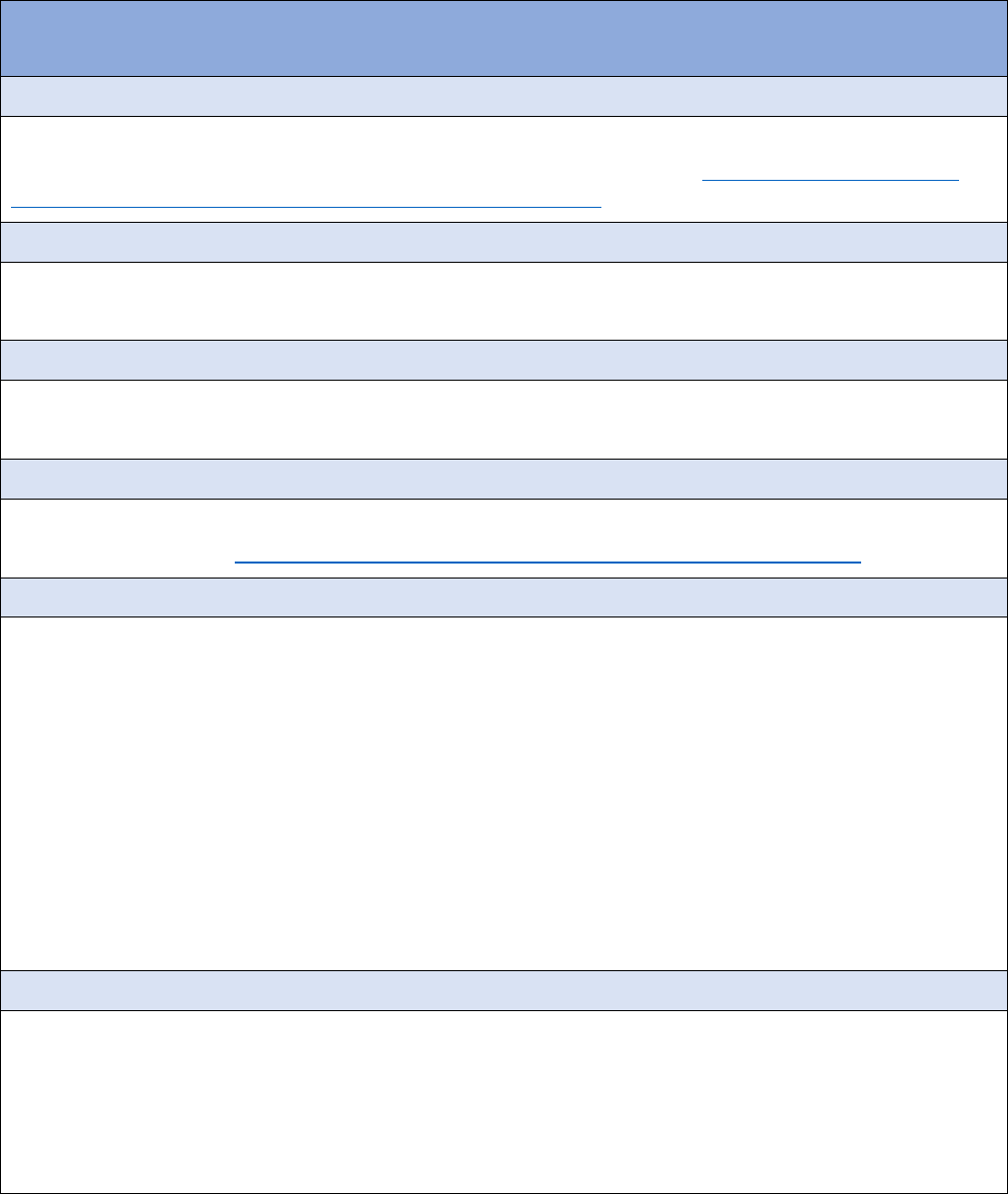
38
Grade 7
Reading Comprehension Strand
7.RC-
Text Complexity (TC)
1.
Independently and proficiently read and comprehend texts representing a balance of genres, cultures, and
perspectives that exhibit complexity at the midrange of the grades 6–8 band. (
See the Quantitative Analysis
Chart for Determining Text Complexity in the Resource Reference.)
Volume of Reading to Build Knowledge (V)
2.
Regularly engage in a volume of reading, independently, with peers, or with modest support related to the
topics and themes being studied to build knowledge and vocabulary.
Textual Evidence (TE)
3.
Draw several pieces of evidence from grade-level texts to support claims and inferences, including quoting or
paraphrasing from texts accurately and tracing where in texts relevant evidence is located.
Reading Fluency (RF)
4.
Read grade-level text with accuracy, automaticity, appropriate rate, and expression in successive readings to
support comprehension (
see the 2017 Hasbrouck and Tindal norms listed in Resource Reference).
Literature (L)
5.
Use evidence from literature to demonstrate understanding of grade-level texts.
5a.
Explain stated or implied themes, analyzing their development over the course of texts; provide
objective summaries of literary texts.
5b.
Explain how particular elements of stories or dramas interact including how setting shapes the
characters or plot.
5c.
Compare and contrast the structure of two or more stories, poems, and plays and analyze how the
differing structure of each literary text contributes to its meaning and style.
5d.
Explain how authors develop and contrast the point of view of different characters or narrators in texts.
5e.
Compare and contrast fictional portrayals of a time, place, or character and historical accounts of the
same period as a means of understanding how authors of fiction use or alter history.
Nonfiction Text (NF)
6.
Use evidence from nonfiction works to demonstrate understanding of grade-level texts.
6a.
Explain stated or implied central ideas of texts, analyzing their development over the course of texts;
provide objective summaries of texts.
6b.
Analyze the relationships or interactions between individuals, events, and ideas in texts (e.g., how ideas
influence individuals or events, or how individuals influence ideas or events).

39
6c. Compare and contrast the structure of two or more texts and analyze how the differing structure of
each text contributes to its meaning and development of ideas.
6d.
Trace the argument and specific claims in texts and assess whether the evidence is sufficient to support
the claims.
6e.
Compare and contrast how two or more authors writing about the same topic shape their presentations
of key information by emphasizing different evidence or advancing different interpretations of facts.
Vocabulary Development Strand
7.VD-
Word Building (WB)
1.
Determine or clarify the meaning of unknown and multiple-meaning words and phrases based on grade-level
content, choosing flexibly from a range of strategies.
1a.
Use context (e.g., the overall meaning of a sentence or paragraph; a word’s position or function in a
sentence) as a clue to the meaning of a word or phrase.
1b.
Use common Greek or Latin affixes and roots as clues to the meaning of a word (e.g., in readings about
earth sciences, determine the meanings of the words geologist and geophysics).
1c.
Consult general and specialized reference materials (e.g., dictionaries, glossaries, thesauruses), print or
digital, to find the pronunciation of a grade-level word and determine or clarify its precise meaning and its
part of speech.
1d.
Verify the preliminary determination of the meaning of a word or phrase (e.g., by checking the inferred
meaning in context or in a dictionary).
2.
Determine how words and phrases provide meaning and nuance to grade-level texts.
2a.
Interpret figurative language (e.g., euphemism, oxymoron) in context.
2b.
Use the relationship between particular words (e.g., synonym/antonym, analogy) to better understand
each of the words.
2c.
Distinguish among the connotations (associations) of words with similar denotations (definitions) (e.g.,
curious versus nosy, assertive versus pushy).
2d.
Analyze the impact of a specific word choice on meaning, tone, or mood, including the impact of
repeated use of certain images.
Academic Vocabulary (AV)
3.
Acquire and use accurately general academic and content-specific words and phrases occurring in grade-
level reading and content; gather vocabulary knowledge when considering a word or phrase important to
comprehension or expression. Use these words in discussions and writing.
Research Strand
7.RS-
Inquiry Process to Build, Present, and Use Knowledge (IP)

40
1.
Conduct brief as well as multi-day research tasks to take some action or share findings orally or in writing by
formulating research questions and generating additional questions for further research; gathering and
assessing the relevance and usefulness of information from multiple reliable sources; and summarizing,
paraphrasing, or quoting the data and conclusions of others, avoiding plagiarism, and providing basic
bibliographic information for sources.
Deep Reading on Topics to Build Knowledge (DR)
2.
Read a series of texts organized around a variety of conceptually related topics to build knowledge about the
world. (These texts should be at a range of complexity levels so students can read the texts independently, with
peers, or with modest support.)
Writing Strand
7.W-
Range of Writing (RW)
1.
Develop flexibility in writing by routinely engaging in the production of shorter and longer pieces for a range
of tasks, purposes, and audiences. This could include, among others, summaries, reflections, descriptions,
critiques, letters, and poetry, etc.
2.
Write arguments that introduce and support a well-defined point of view with appropriate claims, relevant
evidence and clear reasoning, demonstrate a keen understanding of the topic or text, and provide a concluding
section that follows from the argument presented.
3.
Write informational texts that introduce the topic clearly; develop the focus with relevant facts, definitions,
concrete details, quotations, or other information and examples from multiple sources using strategies such as
description, enumeration, classification, comparison, problem-solution, and/or cause-effect; and provide a
concluding section that follows from the information presented.
4.
Write personal or fictional narratives that establish a situation and narrator; engage and orient the reader to
the context and point of view; use narrative techniques such as description, dialogue, pacing and a variety of
precise words and transitional words and phrases to develop the characters, convey sequence, and signal shifts
from one timeframe or setting to another; and provide a conclusion that follows from the narrated event(s).
5.
Produce clear and coherent organizational structures in which ideas and other information are logically
grouped; headings and other formatting support the purpose; and precise language, content-specific
vocabulary, and appropriate transitions create cohesion and clarify the relationships among ideas and
concepts.
6.
With support from adults and peers, develop and strengthen writing as needed by planning, revising, editing,
rewriting, or trying a new approach, focusing on how well purpose and audience have been addressed. (Editing
should demonstrate command of grade-level Grammar and Conventions.)
Handwriting and Keyboarding (HWK)
7.
Write by hand or with technology to produce and publish writing and link to and cite sources as well as to
interact and collaborate with others.

41
Oral and Digital Communications Strand
7.ODC-
Oral Communications (OC)
1.
Engage in collaborative discussions about grade-level topics and texts by following rules for collegial
discussions, defining individual roles, and setting specific goals; posing questions that elicit elaboration and
responding to others with relevant observations; and acknowledging new information expressed by others and,
when warranted, modifying their own views.
2.
Analyze the main ideas and supporting details presented in diverse media and formats (e.g., visually,
quantitatively, orally) and explain how the ideas clarify a topic, text, or issue under study.
3.
Delineate a speaker’s argument and specific claims, evaluating the soundness of the reasoning and the
relevance and sufficiency of the evidence.
4.
Report orally on a topic or text or present an argument, emphasizing salient points in a focused, coherent
manner with pertinent descriptions, facts, details, and examples; use appropriate vocabulary volume and clear
pronunciation.
Digital Communications (DC)
5.
Engage in positive, safe, legal, and ethical behavior when using information and communication
technologies, including social interactions online or when using networked devices.
6.
Consider the reliability of websites and blog posts through such means as determining if they are run by
established institutions, have named expertise, link to other reputable websites, and are current.
7.
Compare and contrast a text to an audio, video, or digital version of the text, analyzing each medium’s
portrayal of the subject.
8.
Include digital components in presentations to clarify claims and findings and emphasize salient points.
*Note: Students advancing through the grades are expected to meet each year’s grade-specific Grammar and Conventions
standards and retain or further develop skills and understandings mastered in preceding grades.
Grammar and Conventions Strand
7.GC-
Grammar and Usage (GU)
1.
Demonstrate command of the conventions of English grammar and usage when writing or speaking.
1a.
Identify the eight basic parts of speech (noun, pronoun, verb, adverb, adjective, conjunction,
preposition, interjection).
1b.
Explain the function of phrases and clauses in general and their function in specific sentences.
1c.
Place phrases and clauses correctly within a sentence, recognizing and correcting misplaced and
dangling modifiers.
1d.
Choose among simple, compound, complex, and compound-complex sentences to signal differing
relationships among ideas.
1e.
Expand, combine, or reduce sentences (e.g., adding or deleting modifiers, combining, or breaking up
sentences) for meaning, reader/listener interest, and style.

42
1f. Adapt speech to a variety of contexts and tasks, demonstrating command of formal English when
indicated or appropriate.
Mechanics (M)
2.
Demonstrate command of the conventions of English punctuation and capitalization when writing and
reading aloud to create meaning.
2a.
Use commas, parentheses, and dashes set off nonrestrictive/parenthetical elements.
2b.
Use commas to separate coordinate adjectives (e.g., It was a fascinating, enjoyable movie).
3.
Spell derivatives correctly by applying knowledge of bases and affixes.

43
Grade 8
Reading Comprehension Strand
8.RC-
Text Complexity (TC)
1.
Independently and proficiently read and comprehend texts representing a balance of genres, cultures, and
perspectives that exhibit complexity at the higher end of the grades 6–8 band. (
See the Quantitative Analysis
Chart for Determining Text Complexity in the Resource Reference.)
Volume of Reading to Build Knowledge (V)
2.
Regularly engage in a volume of reading, independently, with peers, or with modest support related to the
topics and themes being studied to build knowledge and vocabulary.
Textual Evidence (TE)
3.
Draw several pieces of evidence from grade-level texts that strongly supports both what is said explicitly and
what is implied, including quoting, and paraphrasing from relevant sections and accurately and citing textual
references.
Reading Fluency (RF)
4.
Read grade-level text with accuracy, automaticity appropriate rate, and expression in successive readings to
support comprehension (
see the 2017 Hasbrouck and Tindal norms listed in Resource Reference).
Literature (L)
5.
Use evidence from literature to demonstrate understanding of grade-level texts.
5a.
Explain stated or implied themes, analyzing their development over the course of texts, and the
relationship of characters, setting, and plot to those themes.
5b.
Analyze how characters are revealed through particular lines of dialogue or events in literary texts.
5c.
Analyze how authors structure texts to advance a plot, explaining how each event gives rise to the next
or foreshadows a future event.
5d.
Analyze how differences in the points of view of the characters and the audience or reader created with
dramatic irony result in such effects as suspense or humor.
5e.
Relate themes, patterns of events, or character types from myths, traditional stories, or religious works
to contemporary stories, poems, or drama.
Nonfiction Text (NF)
6.
Use evidence from nonfiction works to demonstrate understanding of grade-level texts.
6a.
Explain stated or implied central ideas of texts, analyzing their development over the course of the
texts, including the relationship of individuals, ideas, or events to the central ideas; provide objective
summaries of texts.
6b.
Analyze how texts make connections among and distinctions between individuals, ideas, or events (e.g.,
through comparisons, analogies, or categories).

44
6c. Analyze the structural elements of a text, including the role of specific sentences, paragraphs, and text
features in developing and refining key concepts.
6d.
Trace the argument and specific claims in texts and assess whether all the evidence presented is
relevant and whether irrelevant evidence was introduced.
6e.
Analyze cases in which two or more texts provide conflicting information on the same topic and identify
where the texts disagree on matters of fact or interpretation.
Vocabulary Development Strand
8.VD-
Word Building (WB)
1.
Determine or clarify the meaning of unknown and multiple-meaning words and phrases based on grade-level
content, choosing flexibly from a range of strategies.
1a.
Use context (e.g., the overall meaning of a sentence or paragraph; a word’s position or function in a
sentence) as a clue to the meaning of a word or phrase.
1b.
Use common Greek or Latin affixes and roots as clues to the meaning of a word (e.g., in readings about
mathematics, determine the meanings of the words percentile and perimeter).
1c.
Consult general and specialized reference materials (e.g., dictionaries, glossaries, thesauruses), print or
digital, to find the pronunciation of a grade-level word and determine or clarify its precise meaning or its
part of speech.
1d.
Verify the preliminary determination of the meaning of a word or phrase by checking the inferred
meaning in context or in a dictionary.
2.
Determine how words and phrases provide meaning and nuance to texts.
2a.
Interpret figurative language (e.g., verbal irony, puns) in context.
2b.
Use the relationship between particular words (e.g., homonyms, person to location, object to use) to
better understand each of the words.
2c.
Distinguish among the connotations (associations) of words with similar denotations (definitions) (e.g.,
crowd versus mob, fired versus laid off).
2d.
Analyze the impact of specific word choices on meaning and tone, including analogies or allusions to
other texts.
Academic Vocabulary (AV)
3.
Acquire and use accurately general academic and content-specific words and phrases occurring in grade-
level reading and content; gather vocabulary knowledge when considering a word or phrase important to
comprehension or expression. Use these words in discussions and writing.
Research Strand
8.RS-
Inquiry Process to Build, Present, and Use Knowledge (IP)
1.
Conduct brief as well as multi-day research tasks to take some action or share findings orally or in writing by
formulating research questions and generating additional questions that allow for multiple avenues of

45
exploration; gathering and assessing the relevance and credibility of information from multiple sources; and
summarizing, paraphrasing, or quoting the data and conclusions of others while avoiding plagiarism and
following a standard format for citations.
Deep Reading on Topics to Build Knowledge (DR)
2.
Read a series of texts organized around a variety of conceptually related topics to build knowledge about the
world. (These texts should be at a range of complexity levels so students can read the texts independently, with
peers, or with modest support.)
Writing Strand
8.W-
Range of Writing (RW)
1.
Develop flexibility in writing by routinely engaging in the production of shorter and longer pieces for a range
of tasks, purposes, and audiences. This could include, among others, summaries, reflections, descriptions,
critiques, letters, and poetry, etc.
2.
Write arguments or make claims that support well-defined points of view effectively with relevant evidence
and clear reasoning in ways that logically advance the claim(s) made; demonstrate a nuanced understanding of
the topic; and provide a concluding section that follows from and supports the argument presented.
3.
Write informational texts that introduce the topic clearly; preview what is to follow by establishing and
maintaining a clear focus with relevant, well-chosen facts, definitions, concrete details, quotations, and
examples from multiple sources using appropriate strategies, such as description, enumeration, classification,
comparison, problem-solution, and/or cause-effect; and provide a concluding section that follows from the
information presented.
4.
Write personal or fictional narratives that establish a situation and narrator; engage and orient the reader to
the context and one or multiple points of view; use a variety of techniques such as description, dialogue,
pacing, and precise words and phrases, sensory language and transition words to develop the characters,
capture the action and convey sequence, and signal shifts from one timeframe or setting to another; and
provide a conclusion that follows from the narrated event(s).
5.
Produce clear and coherent organizational structures in which ideas and other information are logically
grouped; headings, other formatting, and graphics (e.g., charts and tables) support the purpose; and precise
language, content-specific vocabulary, and varied transitions create cohesion and clarify the relationships
between and among ideas and concepts.
6.
With support from adults and peers, develop and strengthen writing as needed by planning, revising, editing,
rewriting, or trying a new approach, focusing on how well purpose and audience have been addressed. (Editing
should demonstrate command of grade-level Grammar and Conventions.)
Handwriting and Keyboarding (HWK)
7.
Write by hand or
with technology to produce and publish writing, link to and cite sources, present the
relationships between information and ideas efficiently, and interact and collaborate with others.

46
Oral and Digital Communications Strand
8.ODC-
Oral Communications (OC)
1.
Engage in collaborative discussions about grade-level topics and texts with peers by following rules for
collegial discussions and decision-making, defining individual roles, and tracking progress on specific goals;
propelling conversations forward by posing and responding to questions, relating the current discussion to
broader themes, and connecting the ideas of several speakers; and when warranted, qualifying or justifying
one’s views considering new evidence heard.
2.
Analyze the purpose of information presented in diverse media and formats (e.g., visually, quantitatively,
orally) and evaluate the intent (e.g., social, political, commercial) behind its presentation.
3.
Analyze a speaker’s argument and specific claims, evaluating the soundness of the reasoning and relevance
and sufficiency of the evidence and identifying when irrelevant evidence is introduced.
4.
Report orally on a topic or text or present an argument, emphasizing salient points in a focused, coherent
manner with relevant evidence, and well-chosen details; use appropriate vocabulary, volume, and clear
pronunciation.
Digital Communications (DC)
5.
Demonstrate an understanding of and respect for the rights and obligations of using and sharing intellectual
property.
6.
Consider the evidence websites or blog posts use to support their position (e.g., Are they transparent about
their sources? Do they link to peer-reviewed articles?).
7.
Evaluate the advantages and disadvantages of using different mediums—print or digital text—to present a
particular topic or idea.
8.
Integrate digital displays into presentations to clarify information, strengthen claims and evidence, and add
interest.
*Note: Students advancing through the grades are expected to meet each year’s grade-specific Grammar and Conventions
standards and retain or further develop skills and understandings mastered in preceding grades.
Grammar and Conventions Strand
8.GC-
Grammar and Usage (GU)
1.
Demonstrate command of the conventions of English grammar and usage when writing or speaking.
1a.
Recognize and correct inappropriate shifts in verb voice and mood.
1b.
Form and use verbs in the indicative, imperative, interrogative, and conditional mood.
1c.
Form and use verbs in the active and passive voice to achieve particular effects.
1d.
Explain the function of verbals (gerunds, participles, infinitives) in general and their function in
particular sentences.
1e.
Expand, combine, or reduce sentences (e.g., adding or deleting modifiers, combining, or breaking up
sentences) for meaning, reader/listener interest, and style.

47
1f. Adapt speech to a variety of contexts and tasks, demonstrating command of formal English when
indicated or appropriate.
Mechanics (M)
2.
Demonstrate command of the conventions of English punctuation and capitalization when writing and
reading aloud to create meaning.
2a.
Use commas, ellipsis, and dashes when writing and reading aloud to indicate a pause, break, or
omission.
3.
Spell derivatives correctly by applying knowledge of bases and affixes.

48
Grades 9/10
Reading Comprehension Strand
9/10.RC-
Text Complexity (TC)
1.
Independently and proficiently read and comprehend texts representing a balance of genres, cultures, and
perspectives that exhibit complexity at the higher end of the grades 9–10 band. (
See the Quantitative Analysis
Chart for Determining Text Complexity in the Resource Reference.)
Volume of Reading to Build Knowledge (V)
2.
Regularly engage in a volume of reading related to the topics and themes being studied to build knowledge
and vocabulary. (These texts can include a range of genres and should be at a range of complexity levels so
students can read the texts independently, with peers, or with modest support.)
Textual Evidence (TE)
3.
Draw ample evidence from grade-level texts to support claims and inferences, attending to the precise
details of the authors’ descriptions or explanations through quoting, paraphrasing, and citing textual
references.
Reading Fluency (RF)
4.
Read grade-level text with accuracy, automaticity, appropriate rate, and expression in successive readings to
support comprehension (
see the 2017 Hasbrouck and Tindal norms listed in Resource Reference).
Literature (L)
5.
Use evidence from literature to demonstrate understanding of grade-level texts.
5a.
Analyze the development of themes over the course of the text, including how themes emerge and are
shaped and refined by specific details.
5b.
Analyze how complex characters—those with multiple or conflicting motivations—develop over the
course of texts, interact with other characters, and advance the plot.
5c.
Analyze how authors structure specific parts of a text, including the choice of where to begin and end a
scene, and explain how they contribute to its overall structure and meaning.
5d.
Analyze points of view or cultural experiences that represent diverse voices and perspectives in works
of literature.
5e.
Compare multiple interpretations of texts (including recorded or live production), evaluating how each
version interprets the source text.
Nonfiction Text (NF)
6.
Use evidence from nonfiction works to demonstrate understanding of grade-level texts.
6a.
Analyze the development of central ideas over the course of texts, including how they emerge and are
shaped and refined by specific details; provide accurate summaries of how key events or ideas develop.

49
6b. Explain how authors unfold an analysis or series of ideas or events, including the order in which points
are made, how they are introduced and developed, and the connections that are drawn among them.
6c.
Analyze how authors use structure to explain relationships among concepts in a text, including how key
sentences, paragraphs, and sections of texts contribute to the whole.
6d.
Assess the argument and specific claims in texts, examining whether the reasoning is valid, the evidence
is relevant, and whether there are any false or unsupported statements.
6e.
Analyze seminal documents of historical and literary significance, including how they address related
themes and concepts of liberty, equality, individual responsibility, and justice.
Vocabulary Development Strand
9/10.VD-
Word Building (WB)
1.
Determine or clarify the meaning of unknown and multiple-meaning words and phrases based on grade-level
content, choosing flexibly from a range of strategies.
1a.
Use context (e.g., the overall meaning of a sentence, paragraph, or portion of text; a word’s position or
function in a sentence) as a clue to the meaning of a word or phrase.
1b.
Identify and correctly use patterns of word changes that indicate different meanings or parts of speech
(e.g., defend, defense, defendant, defensible).
1c.
Consult general and specialized reference materials (e.g., dictionaries, glossaries, thesauruses), print or
digital, to find the pronunciation of a grade-level word and determine or clarify its precise meaning, its part
of speech, or its etymology.
1d.
Verify the preliminary determination of the meaning of a word or phrase (e.g., by checking the inferred
meaning in context or in a dictionary).
2.
Determine how words and phrases provide meaning and nuance to texts.
2a.
Use Greek, Latin, and Norse mythology, and other works often alluded to in American and world
literature to understand the meaning of words or phrases (e.g., reference to “Achilles’s heel” from Greek
mythology).
2b.
Interpret figurative language (e.g., hyperbole, paradox) in context and analyze its role in texts (e.g., The
Party’s embrace of the slogans “War is Peace” and “Freedom is Slavery” in Orwell’s 1984).
2c.
Analyze nuances in the meaning of words with similar denotations (e.g., shrewd, clever, cunning, brainy).
2d.
Analyze the cumulative impact of specific word choices on meaning and tone (e.g., how Jonathan Swift
uses exaggeration to create his satirical essay “A Modest Proposal”).
Academic Vocabulary (AV)
3.
Acquire and use accurately general academic and content-specific words and phrases occurring in grade-
level reading and content; demonstrate independence when gathering vocabulary knowledge when
considering a word or phrase important to comprehension or expression. Use these words in discussions and
writing.

50
Research Strand
9/10.RS-
Inquiry Process to Build, Present, and Use Knowledge (IP)
1.
Conduct brief as well as multi-day research projects to take some action or share findings orally or in writing
by formulating a research question and considering alternative avenues of inquiry; gathering relevant
information from a variety authoritative sources and assessing which provide the most reliable and useful
information; and following a standard approved format (e.g., APA, MLA, Chicago) for citations and
bibliographies.
Deep Reading on Topics to Build Knowledge (DR)
2.
Read a series of texts organized around a variety of conceptually related topics to build knowledge about the
world. (These texts should be at a range of complexity levels so students can read the texts independently, with
peers, or with modest support.)
*Note: In grades 9/10, the focus is on informational text writing. While all three text types are important, the Idaho standards
put particular emphasis on students’ ability to convey information accurately in these grade levels. Of course, the standards
leave the inclusion of writing arguments and narratives to teacher discretion.
Writing Strand
9/10.W-
Range of Writing (RW)
1.
Develop flexibility in writing by routinely engaging in the production of shorter and longer pieces for a range
of tasks, purposes, and audiences. This could include, among others, summaries, reflections, descriptions,
critiques, letters, and poetry, etc.
2.
(Argument writing is a priority in grades 11/12; teachers can include argument at their discretion.)
3.
Write informational texts that introduce the topic clearly by providing needed context, presenting well-
defined theses, and previewing what is to follow; develop the topic through sustained use of the most
significant and relevant facts, extended definitions, concrete details, quotations, or other information and
examples from multiple authoritative sources appropriate to the audience’s knowledge of the topic; and
provide a concluding section that follows from the information or explanation presented.
4.
(Teachers can include narrative writing at their discretion.)
5.
Produce clear and coherent organizational structures that attend to the norms and conventions of the
writing genre and in which ideas, concepts, and other information are logically grouped; include formatting and
graphics to support the purpose and create a unified whole; and use precise language, content-specific
vocabulary, and varied transitions to link major sections of the text, create cohesion, and clarify the
relationships between and among ideas and concepts.
6.
Develop and strengthen writing as needed by planning, revising, editing, rewriting, or trying a new approach,
focusing on addressing what is most significant for a specific purpose and audience. (Editing should
demonstrate command of grade-level Grammar and Conventions.)
Handwriting and Keyboarding (HWK)

51
7. Write by hand or with technology to produce, publish, and update individual or shared writing products,
taking advantage of technology’s capacity to link to other information and to display information flexibly and
dynamically.
Oral and Digital Communications Strand
9/10.ODC-
Oral Communications (OC)
1.
Engage in collaborative discussions about grade-level topics and texts with peers by setting rules for collegial
discussions and decision-making, defining individual roles, tracking progress on specific goals; responding to
others’ questions and comments and diverse perspectives with precise evidence, relevant observations, and
ideas; and making new connections considering the evidence and reasoning presented.
2.
Analyze the effect of text and images on the reader's or viewer's emotions in print journalism, and images,
sound, and text in electronic journalism, distinguishing techniques used in each to achieve these effects.
3.
Evaluate a speaker’s point of view, reasoning, and use of evidence and rhetoric, identifying any fallacious
reasoning or exaggerated or distorted evidence.
4.
Report orally on a topic or text or present an argument, emphasizing salient points in a focused, coherent
manner with relevant evidence, sound reasoning, and well-chosen details in a style appropriate to purpose,
audience, and task.
Digital Communications (DC)
5.
Manage personal data to maintain digital privacy and security and be conscious and aware of data-collection
technology used to track and exploit navigation online.
6.
Integrate multiple sources of information presented in diverse digital media, evaluating the credibility and
accuracy of each source.
7.
Analyze various accounts of a subject told in different media (e.g., a person’s life story in print or digitally),
determining which details are emphasized in each account.
8.
Make strategic use of digital media presentations to enhance understanding of findings, reasoning, and
evidence and to add interest.
*Note: Students advancing through the grades are expected to meet each year’s grade-specific Grammar and Conventions
standards and retain or further develop skills and understandings mastered in preceding grades.
Grammar and Conventions Strand
9/10.GC-
Grammar and Usage (GU)
1.
Demonstrate command of the conventions of English grammar and usage when writing or speaking.
1a.
Use verbs in the active and passive voice and in the conditional and subjunctive mood to achieve
particular effects (e.g., emphasizing the actor or the action; expressing uncertainty or describing a state
contrary to fact).
1b.
Use parallel structure.

52
1c. Place modifiers properly.
1d.
Use the subjunctive mood accurately.
1e.
Avoid run-on sentences, comma splices, and sentence fragments.
1f.
Use subordination, coordination, apposition, and other devices to indicate the relationship between
ideas clearly.
1g.
Use various types of phrases (noun, verb, adjectival, adverbial, participial, prepositional, absolute) to
convey specific meanings and add variety and interest to writing or presentations.
1h.
Use various types of clauses (independent, dependent, noun, relative, adverbial) to convey specific
meanings and add variety and interest to writing or presentations.
1i.
Adapt speech to a variety of contexts and tasks, using formal English when appropriate to task and
situation.
1j.
Choose language that expresses ideas precisely and concisely, recognizing and eliminating wordiness
and redundancy.
Mechanics (M)
2.
Demonstrate command of the conventions of English punctuation and capitalization when writing and
reading aloud to create meaning.
2a.
Use a semicolon (or appropriate conjunctive adverb) to link two or more closely related independent
clauses.
2b.
Use a colon to introduce a list or quotation.
2c.
Observe hyphenation conventions.
3.
Spell correctly, consulting reference materials to check as needed.

53
Grades 11/12
Reading Comprehension Strand
11/12.RC-
Text Complexity (TC)
1.
Independently and proficiently read and comprehend texts representing a balance of genres, cultures, and
perspectives that exhibit complexity at the lower end of the grades 11–12 band. (
See the Quantitative Analysis
Chart for Determining Text Complexity in the Resource Reference.)
Volume of Reading to Build Knowledge (V)
2.
Regularly engage in a volume of reading, texts independently, with peers, or with modest support related to
the topics and themes being studied to build knowledge and vocabulary.
Textual Evidence (TE)
3.
Draw and cite strong and thorough evidence from grade-level texts to support claims and inferences,
attending to important distinctions authors make and how those are supported, as well as any gaps or
inconsistencies in accounts offered.
Reading Fluency (RF)
4.
Read grade-level text with accuracy, automaticity, appropriate rate, and expression in successive readings to
support comprehension (
see the 2017 Hasbrouck and Tindal norms listed in Resource Reference).
Literature (L)
5.
Use evidence from literature to demonstrate understanding of grade-level texts.
5a.
Compare the development of a universal theme over the course of two texts, including how it emerges
and is shaped and refined by specific details in each.
5b.
Evaluate the choices authors make regarding how to develop and relate several elements of literary
texts , including how the characters are introduced and developed and how the action is ordered.
5c.
Evaluate how authors structure texts to distinguish what is directly stated in a text from what is really
meant, including satire, sarcasm, irony, and understatement.
5d.
Relate literary works and their authors’ points of view to the political events and seminal ideas of their
eras.
5e.
Compare and contrast how works of literary or cultural significance, including myths and traditional
stories, draw on similar themes, patterns of events, or character types.
Nonfiction Text (NF)
6.
Use evidence from nonfiction works to demonstrate understanding of grade-level texts.
6a.
Compare texts that express similar central ideas and analyze in detail how their development and
treatment of the topic compares over the course of the two texts; provide accurate summaries of how key
events or ideas develop.

54
6b. Evaluate various explanations of concepts and ideas and determine which explanation best accords
with textual evidence, noting discrepancies among sources.
6c.
Evaluate the effectiveness of the structure(s) and rhetorical devices authors use in their exposition or
argument, including whether the structure helps makes points clear, convincing, and engaging.
6d.
Analyze the hypotheses, data, analysis, and conclusions in an argument, verifying the data when
possible and corroborating or challenging conclusions with other sources of information.
6e.
Evaluate the premises and purposes in works of public advocacy.
Vocabulary Development Strand
11/12.VD-
Word Building (WB)
1.
Determine or clarify the meaning of unknown and multiple-meaning words and phrases based on grade-level
content, choosing flexibly from a range of strategies.
1a.
Use context (e.g., the overall meaning of a sentence, paragraph, or portion of text; a word’s position or
function in a sentence or a sentence within a paragraph) as a clue to the meaning of a word or phrase.
1b.
Identify and correctly use patterns of word changes that indicate different meanings or parts of speech
(e.g., symbol, symbolism, symbolic, symbolize).
1c.
Consult general and specialized reference materials (e.g., dictionaries, glossaries, thesauruses), print or
digital, to find the pronunciation of a grade-level word and determine or clarify its precise meaning, its part
of speech, its etymology, or its standard usage.
1d.
Verify the preliminary determination of the meaning of a word or phrase (e.g., by checking the inferred
meaning in context or in a dictionary).
2.
Determine how words and phrases provide meaning and nuance to texts.
2a.
Use Greek, Latin, and Norse mythology; and other works often alluded to in American and world
literature to understand the meaning of words or phrases (e.g., “narcissistic” from the myth of Narcissus
and Echo).
2b.
Analyze how an author uses and refines the meaning of a key term or terms over the course of a text
(e.g., how FDR explored different ideas regarding freedom in his “Four Freedoms” speech).
2c.
Analyze nuances in the meaning of words with similar denotations (e.g., aggressive, assertive, forceful,
domineering).
2d.
Analyze the impact of specific word choices on the effectiveness of the message meaning and the tone
of the text.
Academic Vocabulary (AV)
3.
Acquire and use accurately general academic and content-specific words and phrases occurring in grade-
level reading and content; demonstrate independence in gathering vocabulary knowledge when considering a
word or phrase important to comprehension or expression. Use these words in discussions and writing.

55
Research Strand
11/12.RS-
Inquiry Process to Build, Present, and Use Knowledge (IP)
1.
Conduct brief as well as multi-day research projects to take some action or share findings orally or in writing
by formulating multiple interlocking research questions that span the field of inquiry in time and scope;
gathering relevant information efficiently from a variety of authoritative sources, as well as from direct
observation, interviews, and surveys; making distinctions about the strengths and limitations of each source in
terms of the task, purpose, and audience, noting any discrepancies among the data; and following a standard
approved format (e.g., APA, MLA, Chicago) for citations and bibliographies.
Deep Reading on Topics to Build Knowledge (DR)
2.
Read a series of texts independently, with peers, or with modest support, organized around a variety of
conceptually related topics to build knowledge about the world.
*Note: In grades 11/12, the focus is on writing arguments. While all three text types are important, the Idaho standards put
particular emphasis on students’ ability to write sound arguments on substantive topics, as this ability is critical to college and
career readiness. Of course, the standards leave the inclusion of writing informational texts and narratives to teacher discretion.
Writing Strand
11/12.W-
Range of Writing (RW)
1.
Develop flexibility in writing by routinely engaging in the production of shorter and longer pieces for a range
of tasks, purposes, and audiences. This could include, among others, summaries, reflections, descriptions,
critiques, letters, and poetry, etc.
2.
Write arguments that support well-defined points of view that establish the significance of the claim(s) and
distinguish those claim(s) from alternate or opposing claims with persuasive evidence and clear reasoning;
point out the strengths and limitations of each claim in a manner that anticipates the audience’s knowledge
level, concerns, and values; and provide a concluding section that articulates the implications, or the
significance, of the argument presented.
3&4.
(Teachers can include informational and narrative writing at their discretion.)
5.
Produce clear and coherent organizational structures that attend to the norms and conventions of the
writing genre, and in which ideas, concepts, and other information build on one another; include formatting
and graphics to support the purpose, aid in comprehension, and create a unified whole; and use precise
language, content-specific vocabulary, and varied transitions to link major sections of the text, create cohesion
and clarify the relationships between and among ideas and concepts.
6.
Develop and strengthen writing as needed by planning, revising, editing, rewriting, or trying a new approach,
focusing on reframing points to address specific purposes or needs of the audience. (Editing should
demonstrate command of grade-level Grammar and Conventions.)
Handwriting and Keyboarding (HWK)
7.
Write by hand or with technology to produce, publish, and update individual or shared writing products in
response to ongoing feedback, including new arguments or information.

56
Oral and Digital Communications Strand
11/12.ODC-
Oral Communications (OC)
1.
Engage in collaborative discussions about grade-level topics and texts with peers by promoting civil,
democratic discussions and decision-making, establishing individual roles, and tracking progress on specific
goals; propelling conversations forward by synthesizing comments and ideas of several speakers and
responding to diverse perspectives with relevant observations and ideas, resolving contradictions when
possible; and determining what additional information is required to deepen the investigation or complete the
task.
2.
Analyze how visual and sound techniques or design (such as special effects, camera angles, and music) carry
or influence messages in various media.
3.
Evaluate a speaker’s point of view, reasoning, and use of evidence and rhetoric, assessing the stance,
premises, links among ideas, word choice, points of emphasis, and tone used.
4.
Present information, findings, and supporting evidence orally, conveying a clear and distinct perspective,
such that listeners can follow the line of reasoning; ensure alternative or opposing perspectives are addressed;
and the organization, development, substance, and style are appropriate to purpose, audience, and a range of
formal and informal tasks.
Digital Communications (DC)
5.
Demonstrate the responsible and ethical use of information and communication technologies by
distinguishing between kinds of information that should and should not be publicly shared and describing the
consequences of a poor decision.
6.
Integrate multiple sources of information presented in diverse digital media to make informed decisions and
solve problems, evaluating the credibility and accuracy of each source and noting any discrepancies among the
data.
7.
Analyze multiple interpretations of a text (e.g., recorded or live production of a play or recorded novel or
poetry), evaluating how each version interprets the source text.
8.
Make strategic use of digital media in presentations to enhance understanding of findings, reasoning, and
evidence and to add interest.
*Note: Students advancing through the grades are expected to meet each year’s grade-specific Grammar and Conventions
standards and retain or further develop skills and understandings mastered in preceding grades.
Grammar and Conventions Strand
11/12.GC-
Grammar and Usage (GU)
1.
Demonstrate command of the conventions of English grammar and usage when writing or speaking.
1a.
Apply the understanding that usage is a matter of convention, can change over time, and is sometimes
contested, consulting references (e.g., Merriam-Webster’s Dictionary of English Usage, Garner’s Modern
American Usage) as needed.
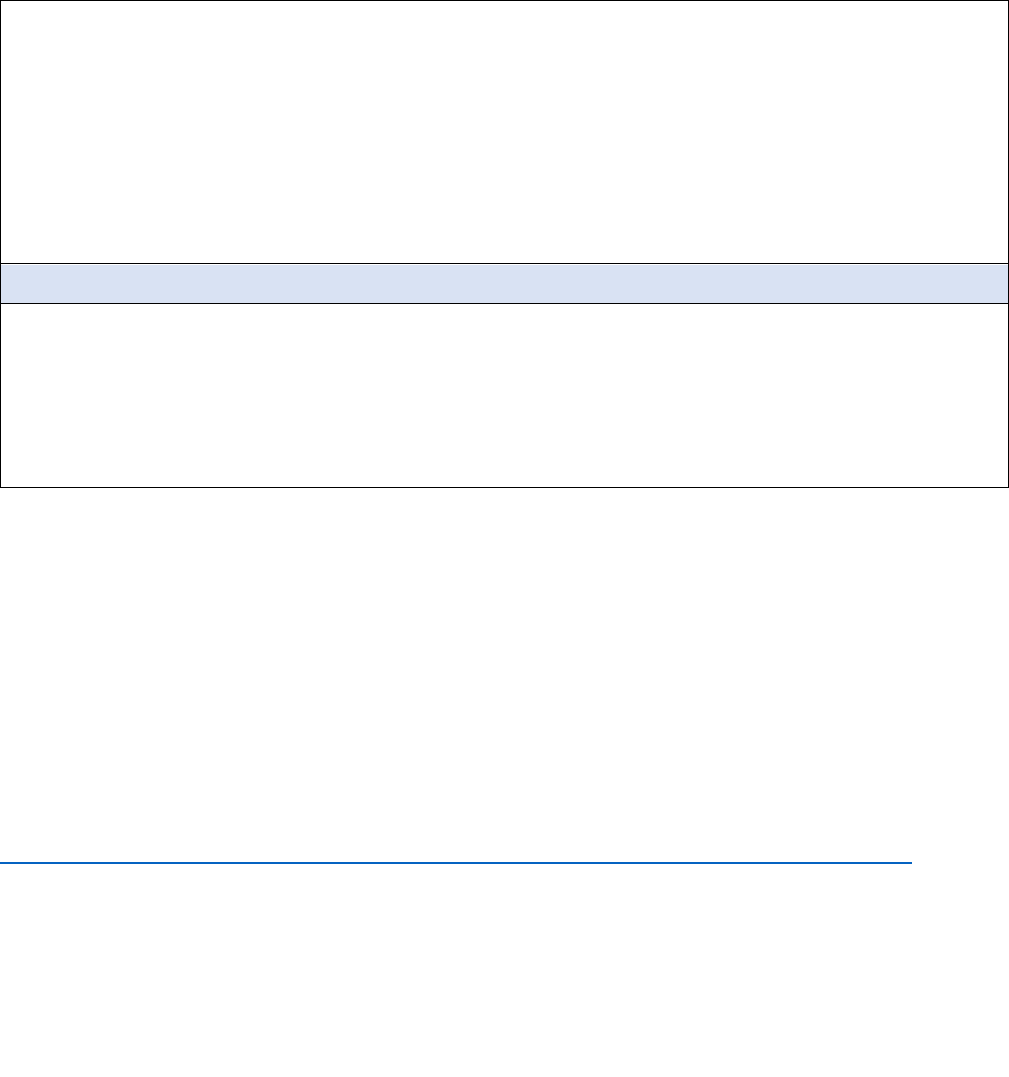
57
1b. Use a variety of sentence structures, including compound and compound-complex sentences with
effective coordination and subordination of ideas and parallel, repetitive, and analogous sentence
structures.
1c.
Write and edit work so that it conforms to the guidelines in a style manual (e.g., MLA Handbook,
Turabian’s Manual for Writers) appropriate for the writing type.
1d.
Vary syntax for effect, consulting references (e.g., Tufte’s Artful Sentences) for guidance as needed.
1e.
Adapt speech to a variety of contexts and tasks, using formal English when appropriate to task and
situation; and distinguish where informal discourse is more appropriate.
Mechanics (M)
2.
Demonstrate command of the conventions of English punctuation and capitalization when writing and
reading aloud to create meaning.
2a.
Reflect appropriate manuscript requirements in writing, including correct use of seriation (headings and
subheadings).
3.
Spell correctly, consulting reference materials to check as needed.
References
ACT. Reading Between the Lines: What the ACT Reveals About College Readiness in Reading. Iowa City, IA, 2006.
Adams, M. J. (2009). The challenge of advanced texts: The interdependence of reading and learning. In E. H.
Hiebert (Ed.), Reading more, reading better: Are American students reading enough of the right stuff? (pp. 163–
189). New York, NY: Guilford.
Flower, L., Stein, V., Ackerman, J., Kantz, M. J., McCormick, K., & Peck, W. C. (1990). Reading to write: Exploring a
cognitive & social process. New York: Oxford University Press.
Graham, S., & Hebert, M. (2010). Writing to Read: Evidence for How Writing Can Improve Reading. Carnegie
Corporation Time to Act Report. Washington, DC: Alliance for Excellent Education.
https://www.carnegie.org/publications/writing-to-read-evidence-for-how-writing-can-improve-reading/
Intersegmental Committee of the Academic Senates (ICAS) of the California Community Colleges, the California
State University, and the University of California. (2002). Academic Literacy: A Statement of Competencies
Expected of Students Entering California’s Public Colleges and Universities. Sacramento, CA: ICAS.
National Reading Panel (US), National Institute of Child Health & Human Development (US). (2000). Teaching
children to read: An evidence-based assessment of the scientific research literature on reading and its implications
for reading instruction: Reports of the subgroups. National Institute of Child Health and Human Development,
National Institutes of Health.
Recht, D. R., & Leslie, L. (1988). Effect of prior knowledge on good and poor readers' memory of text. Journal of
Educational Psychology, 80 (1), 16.
